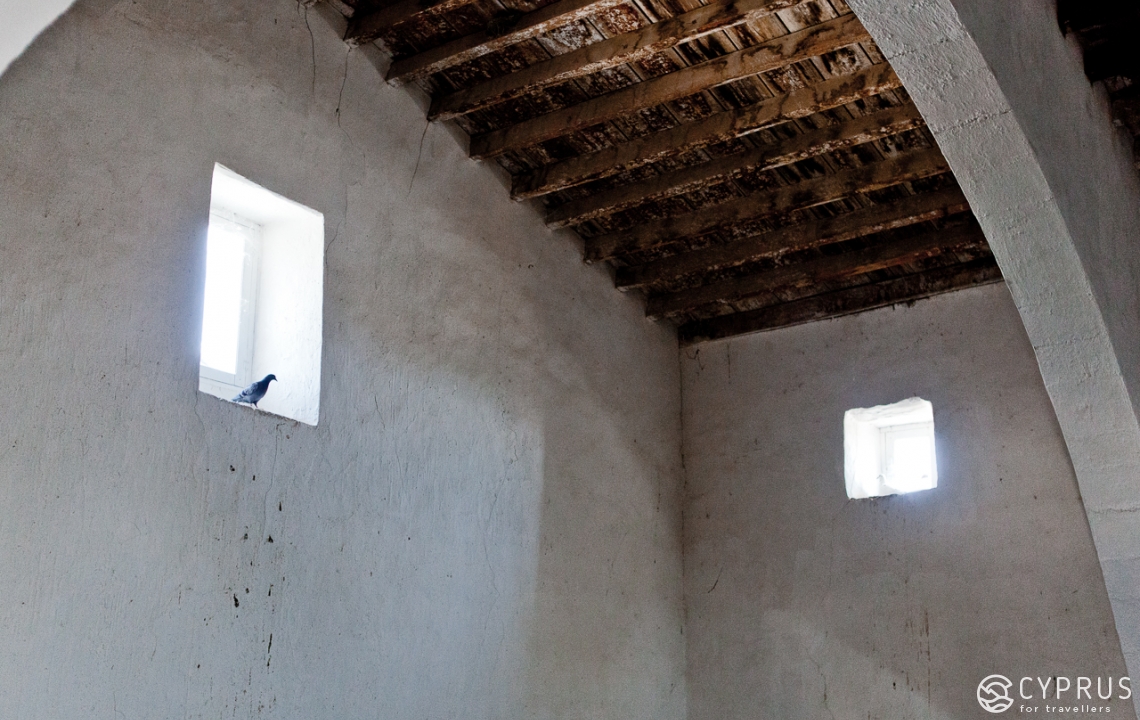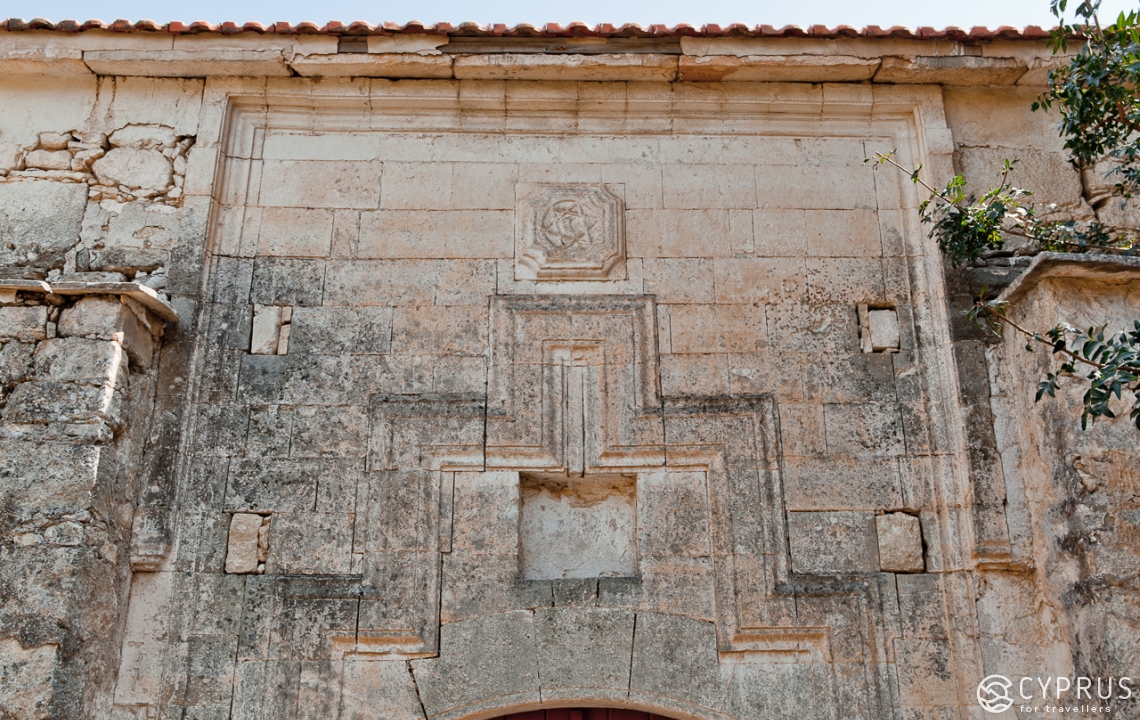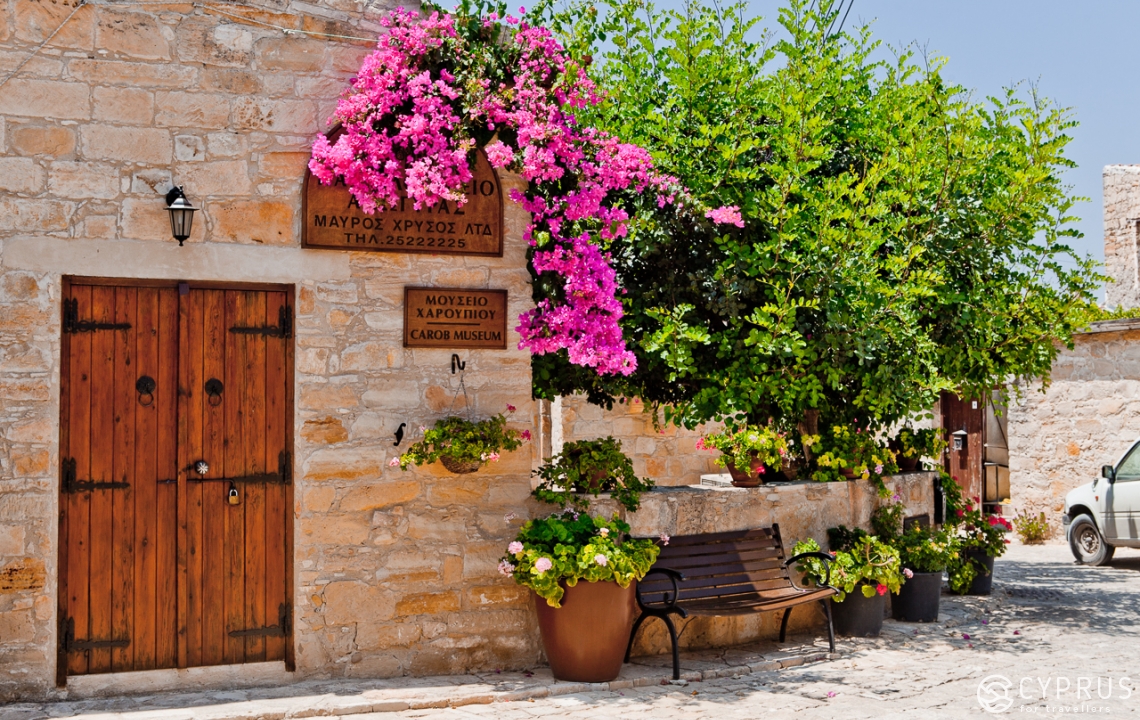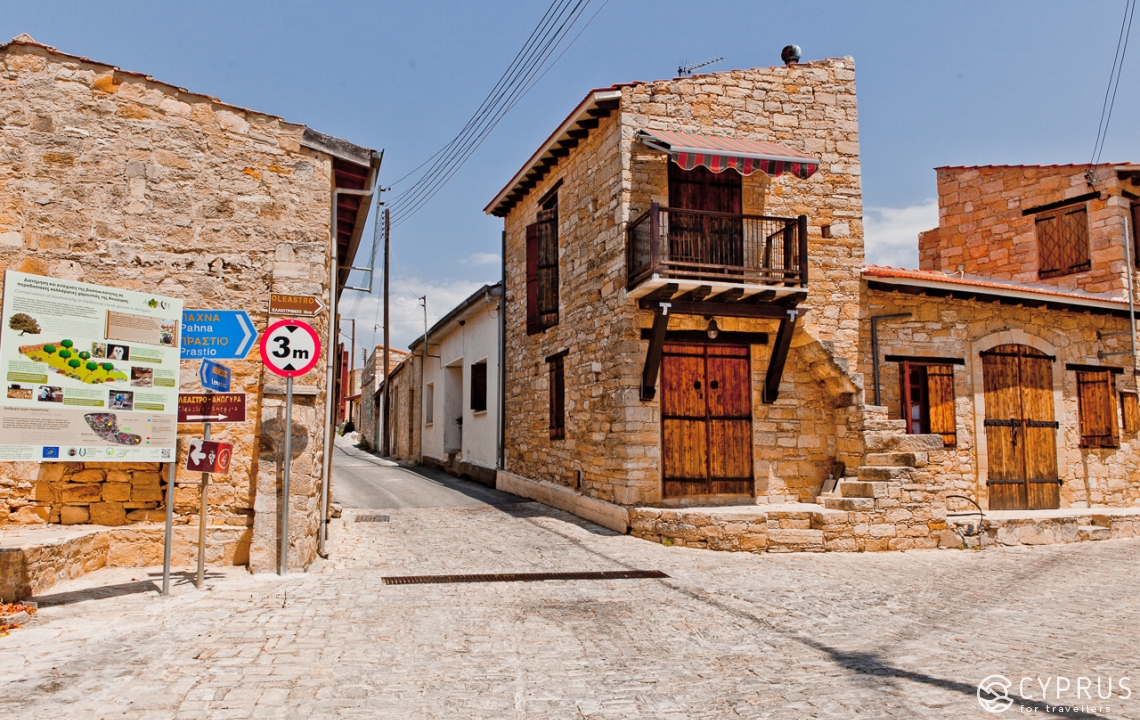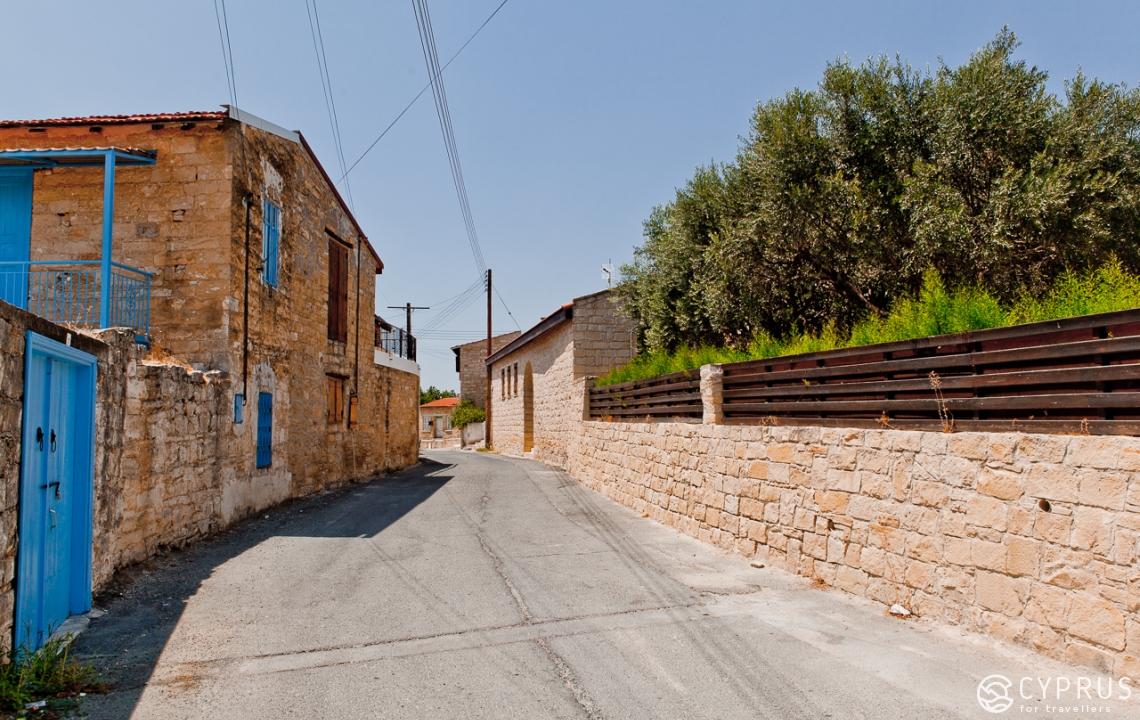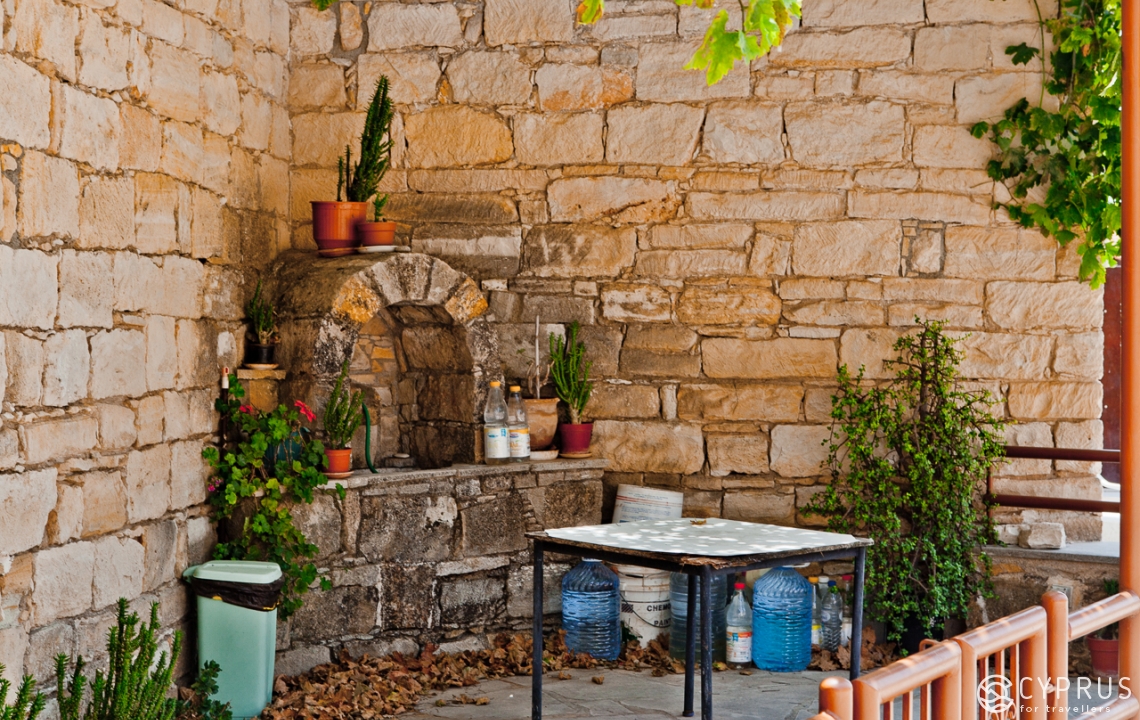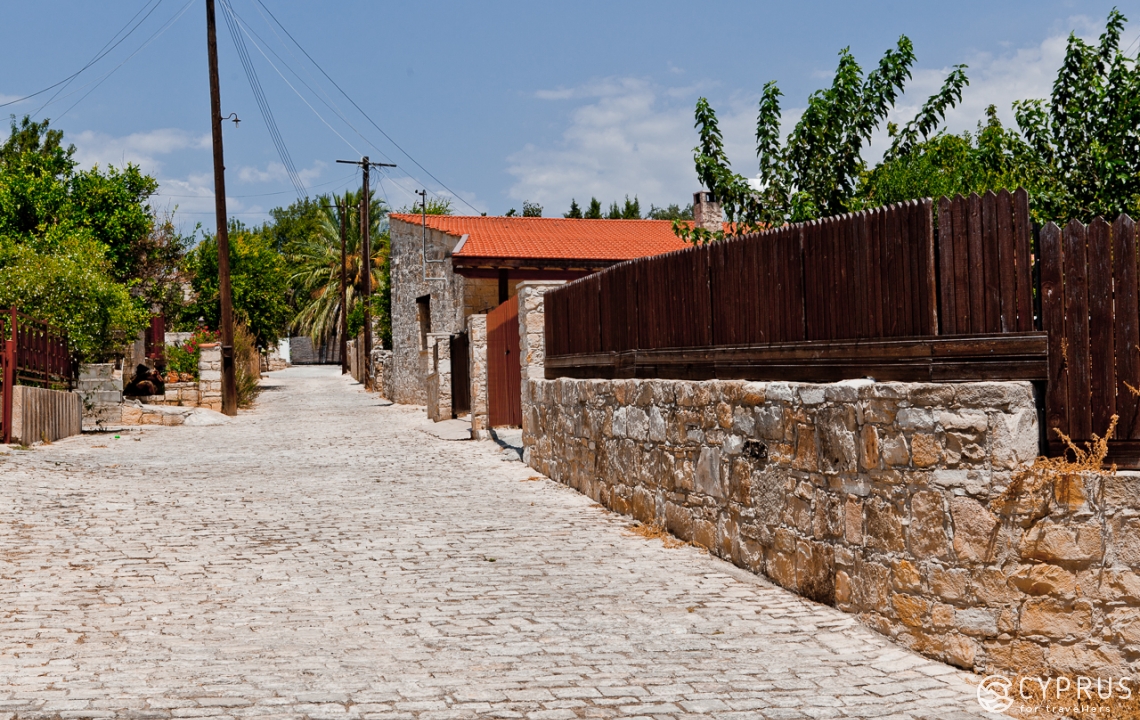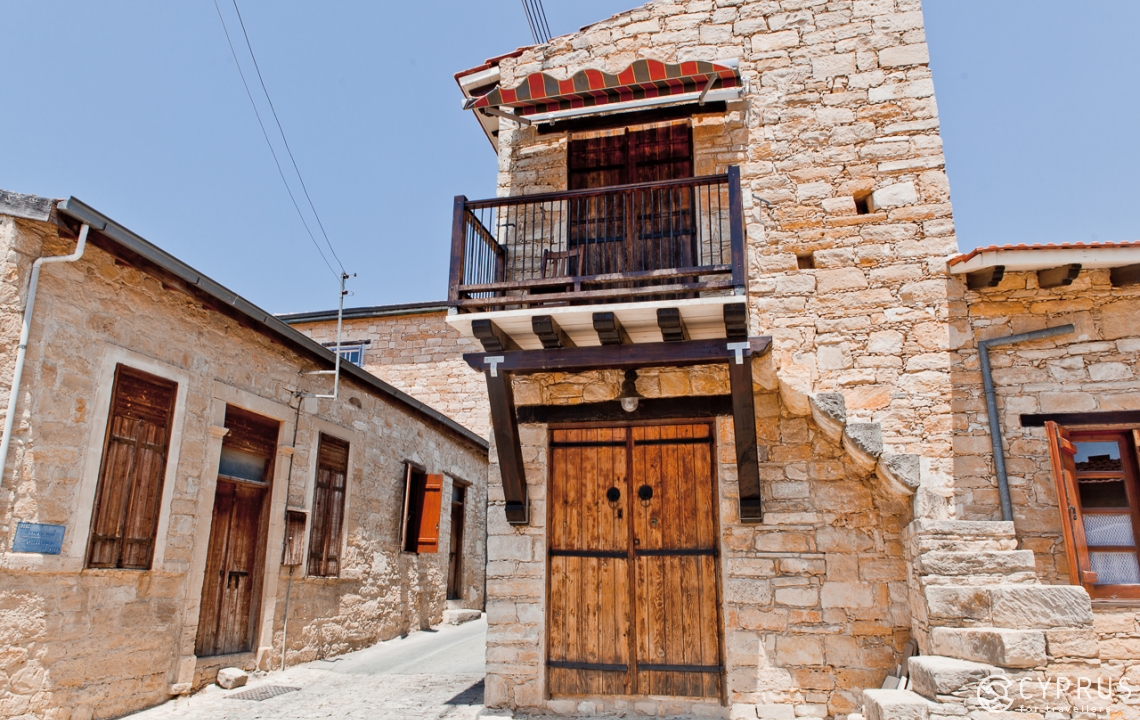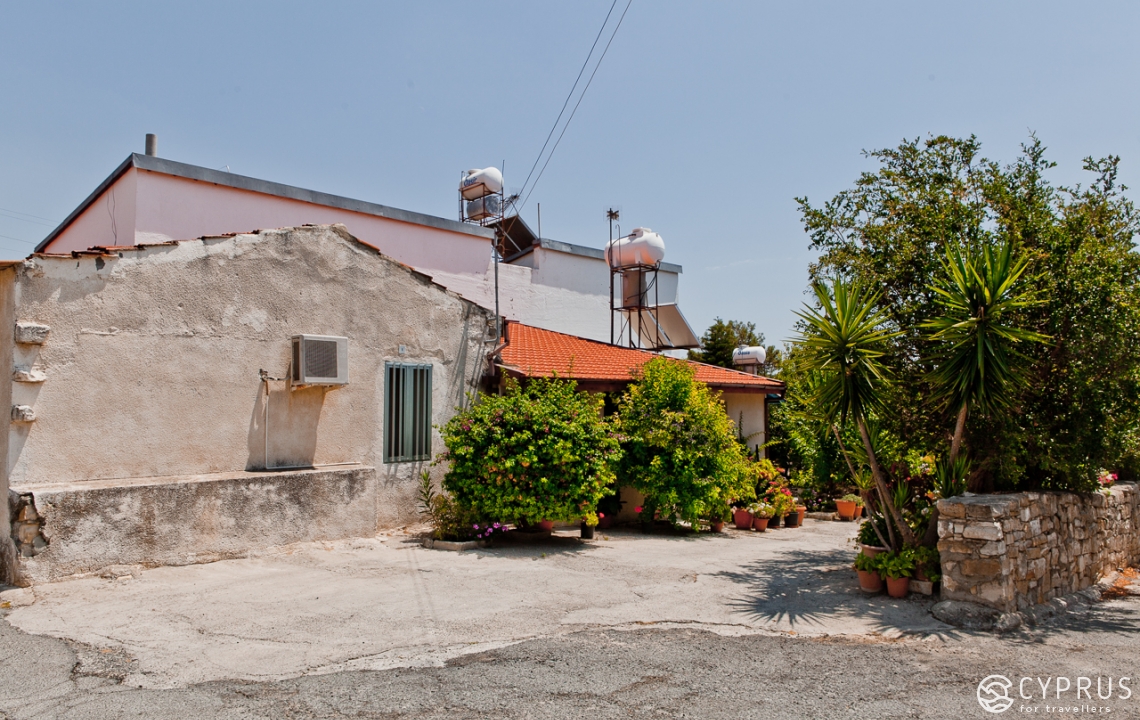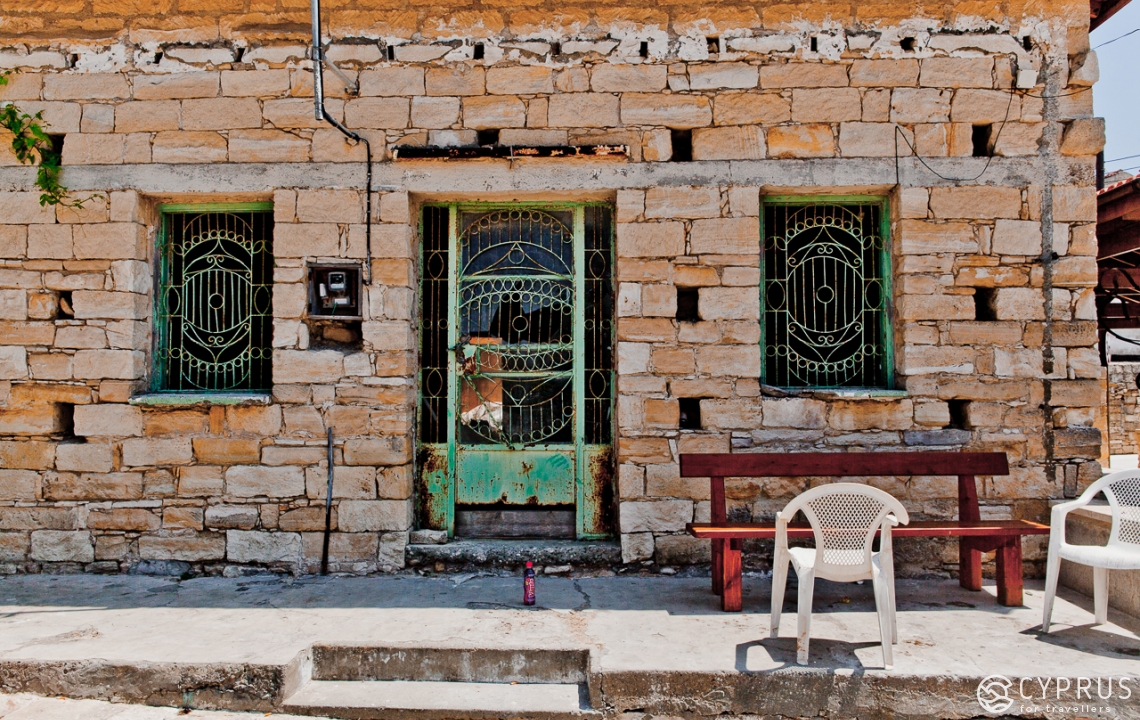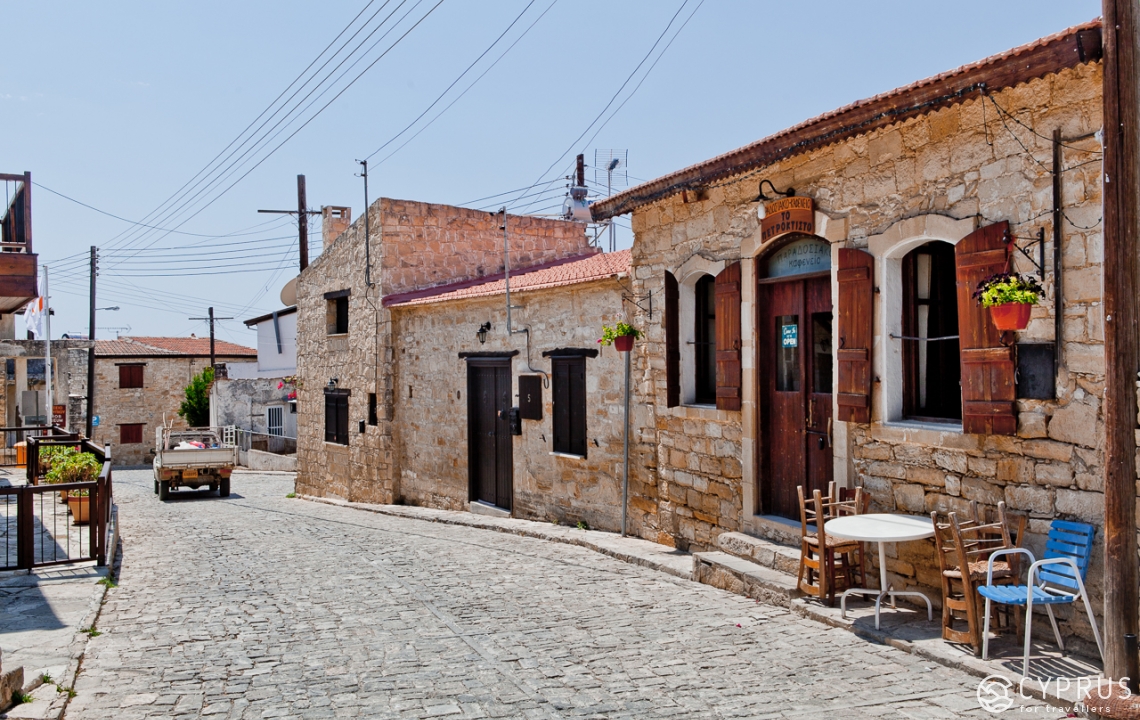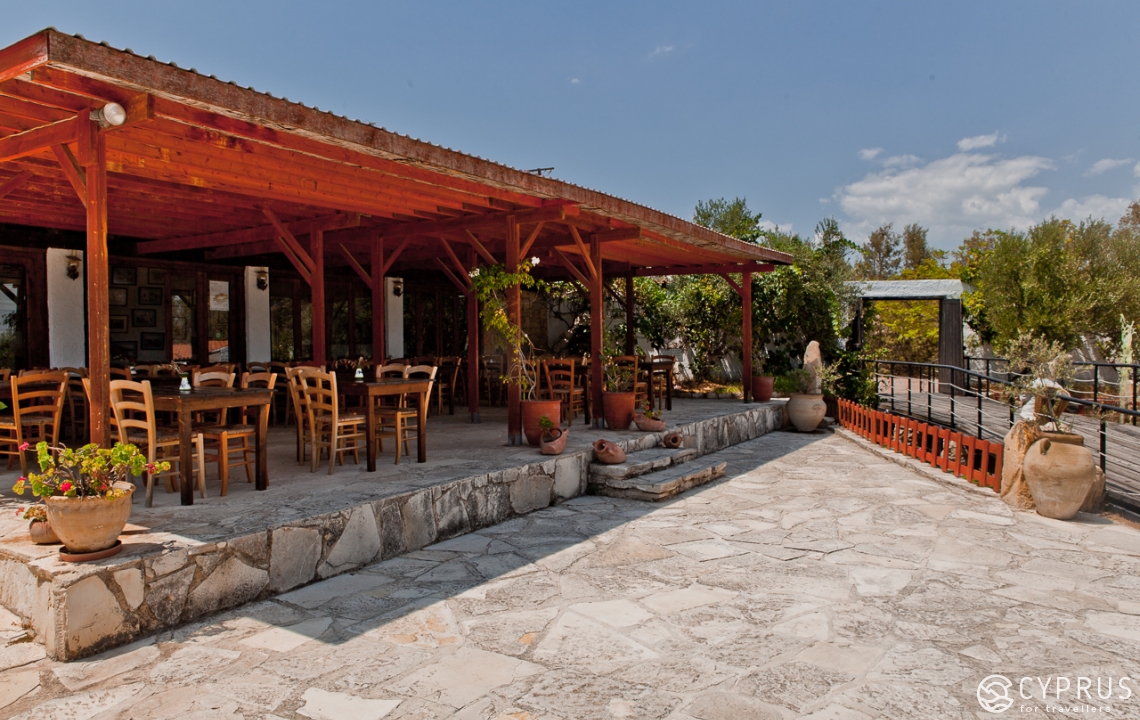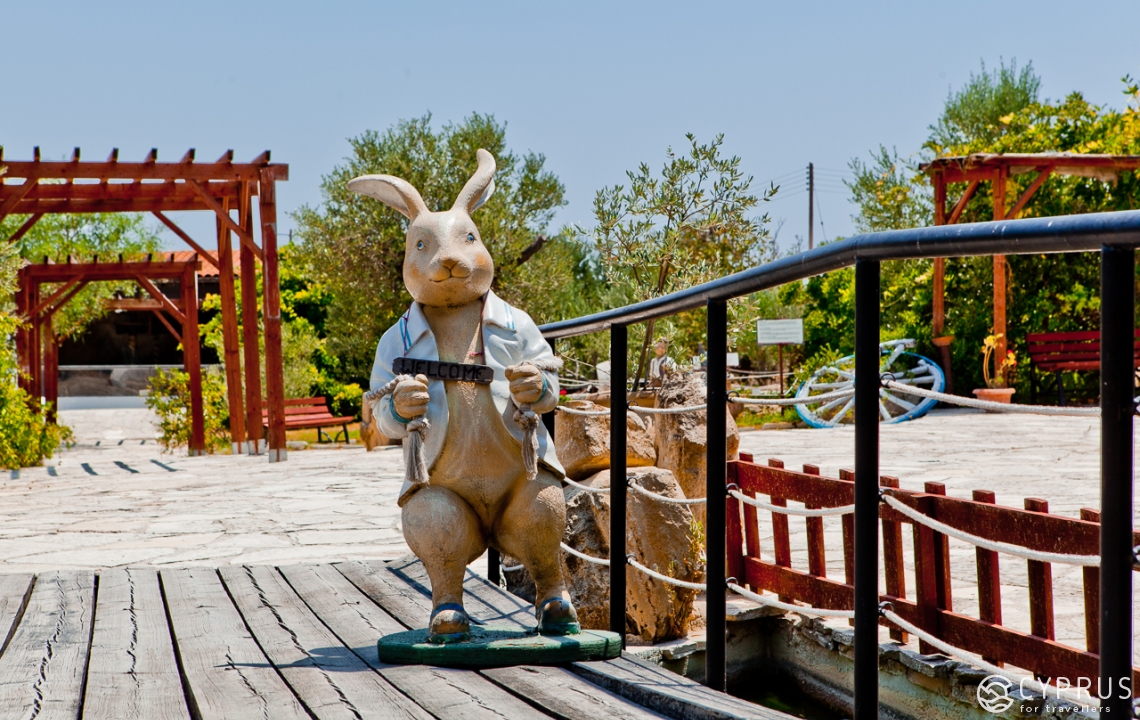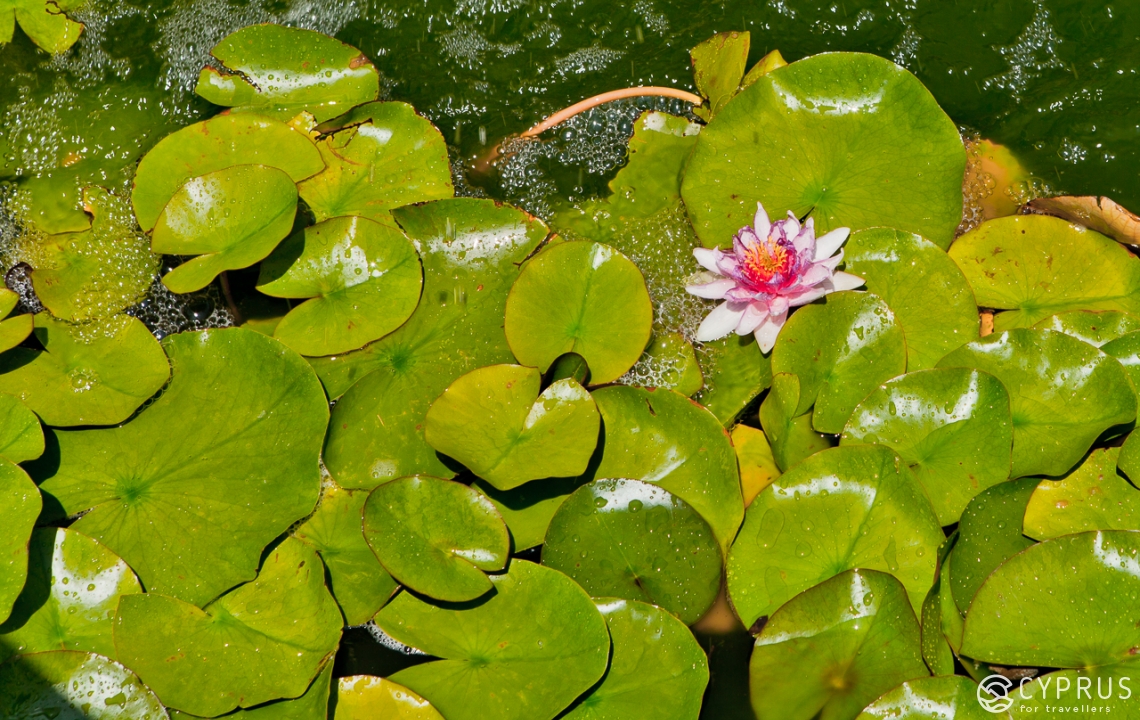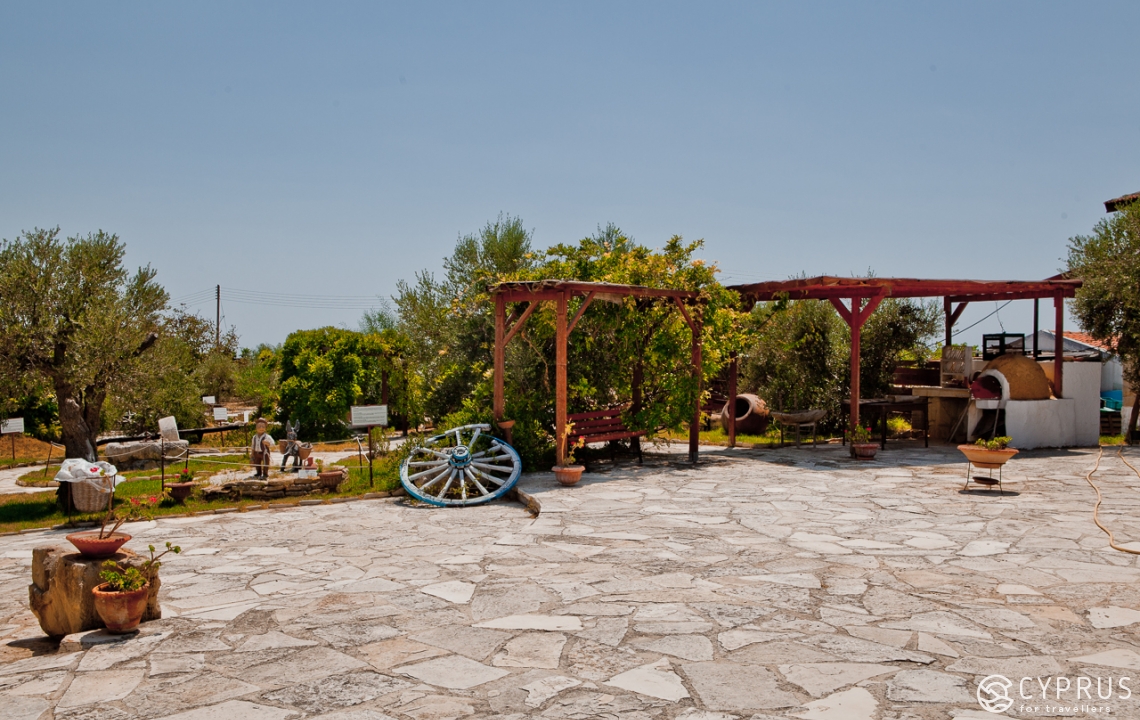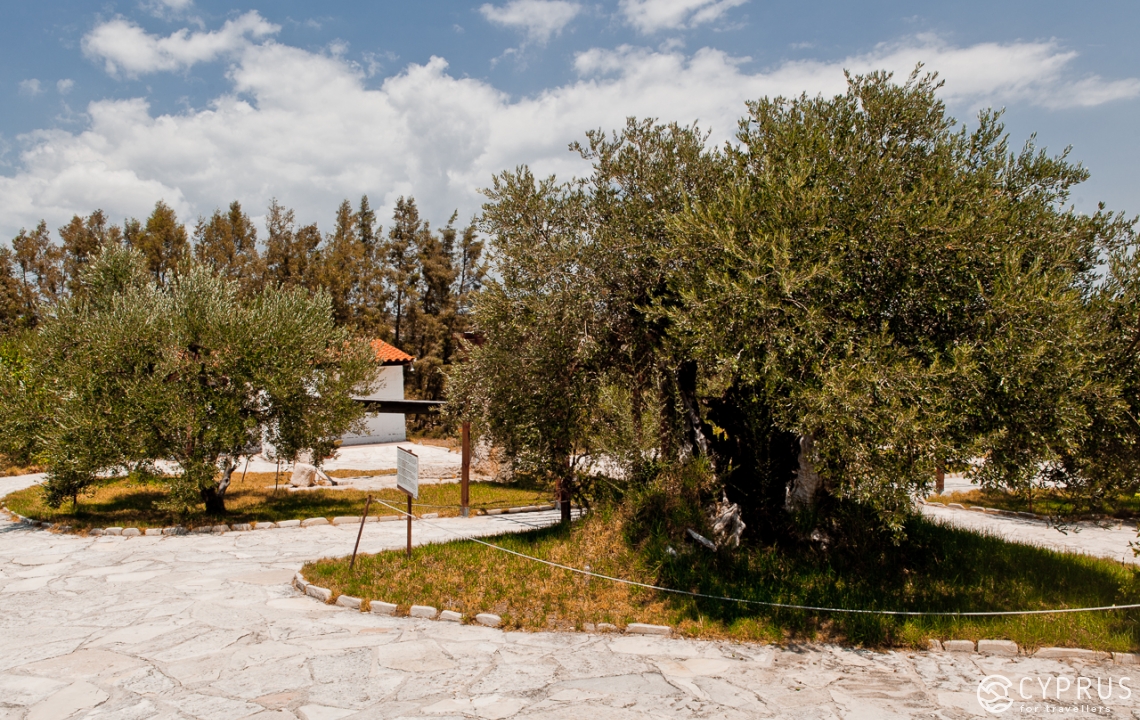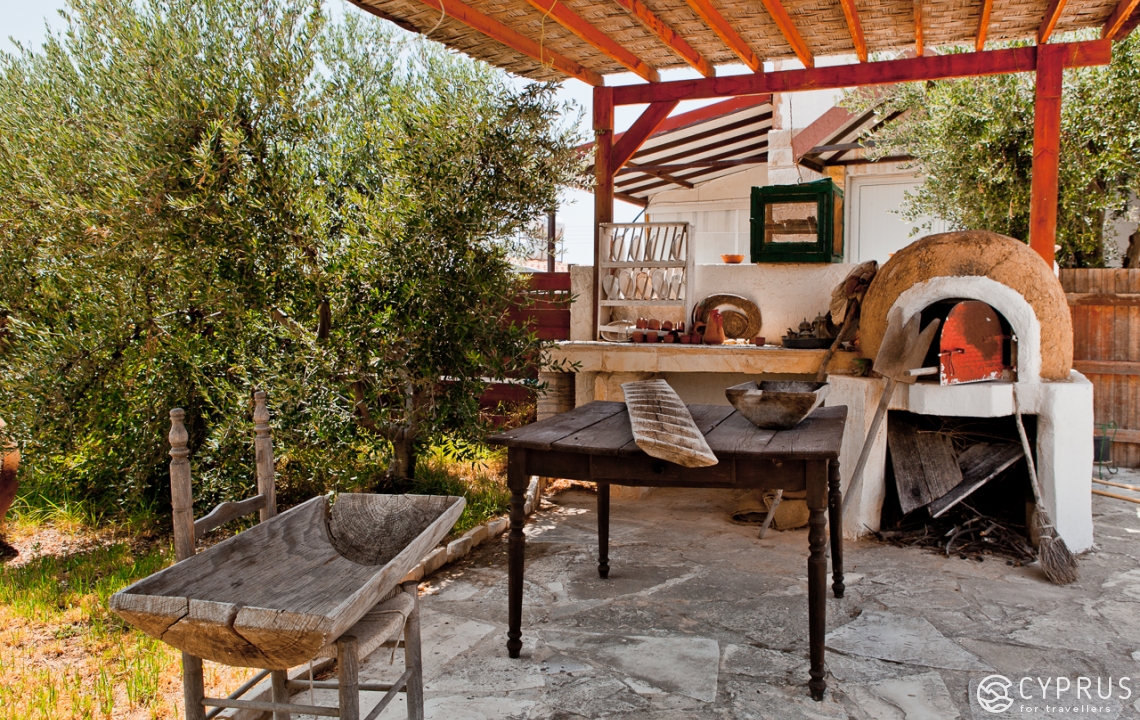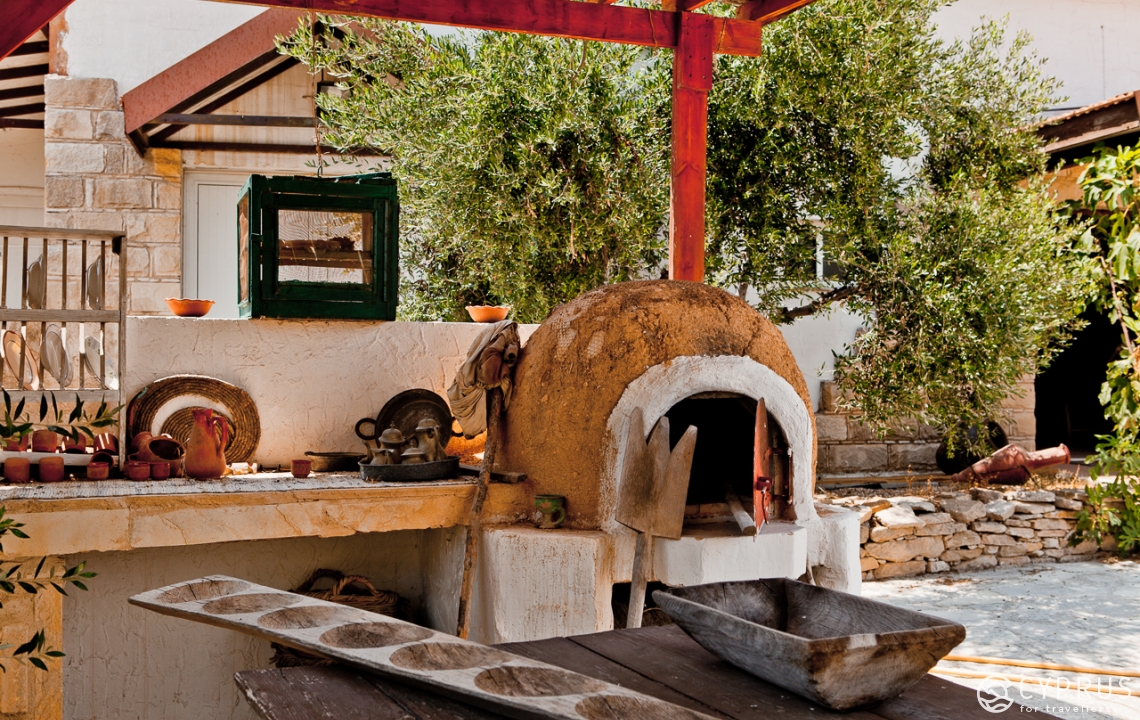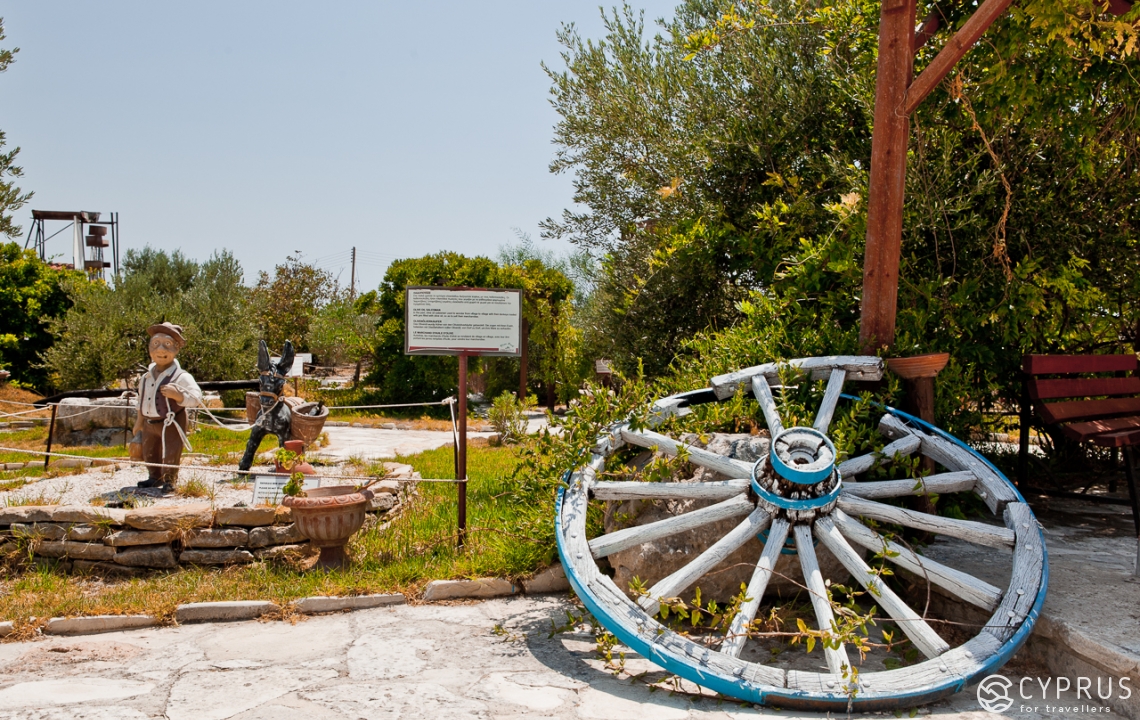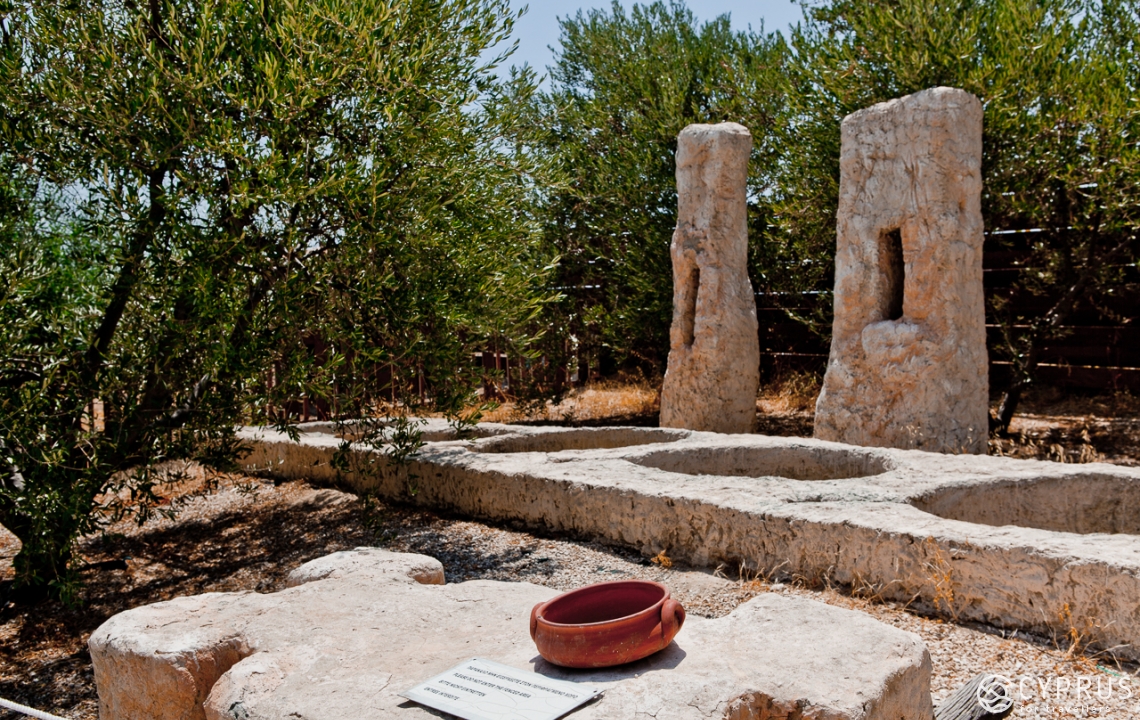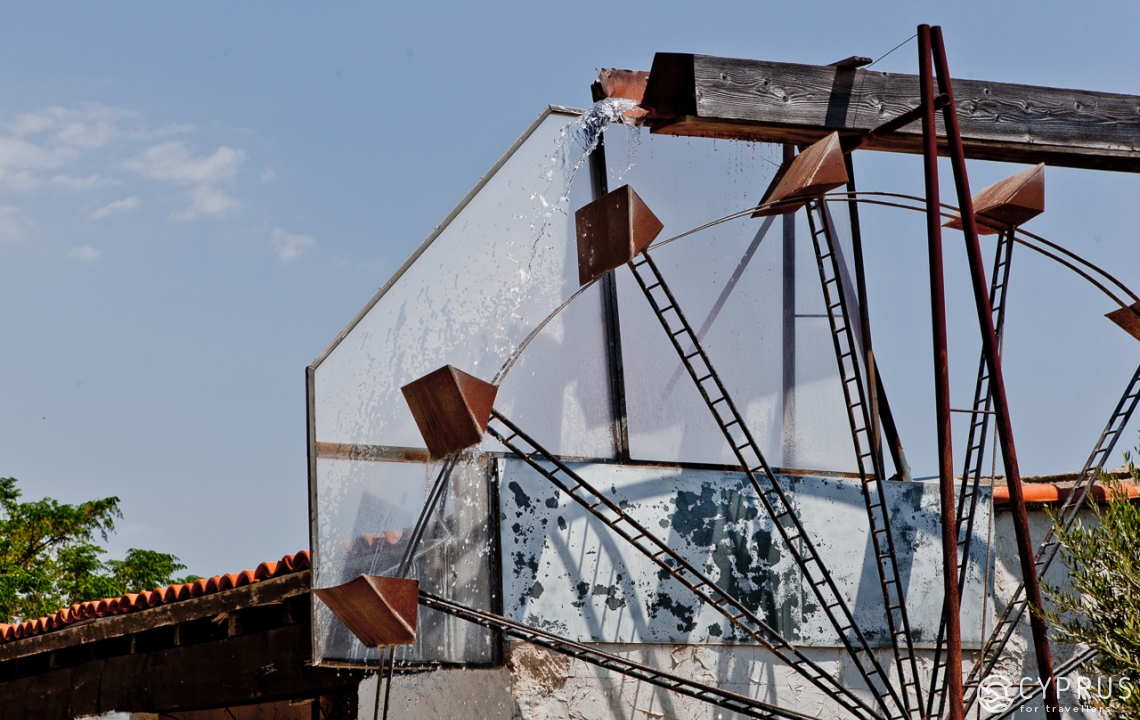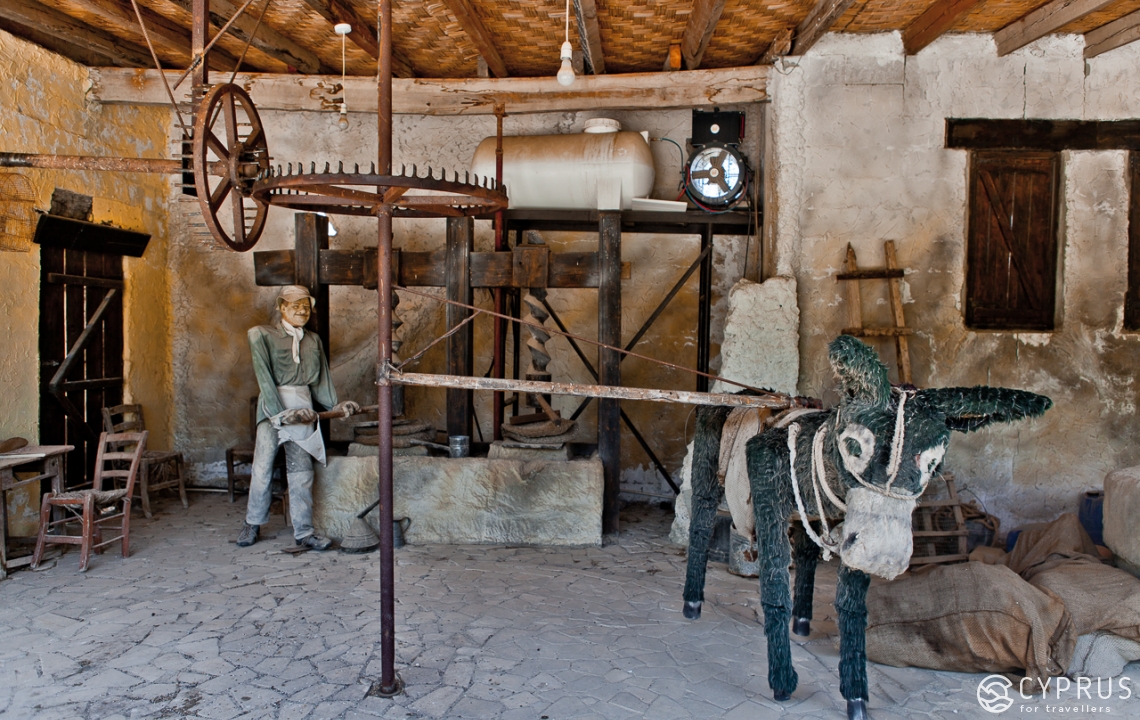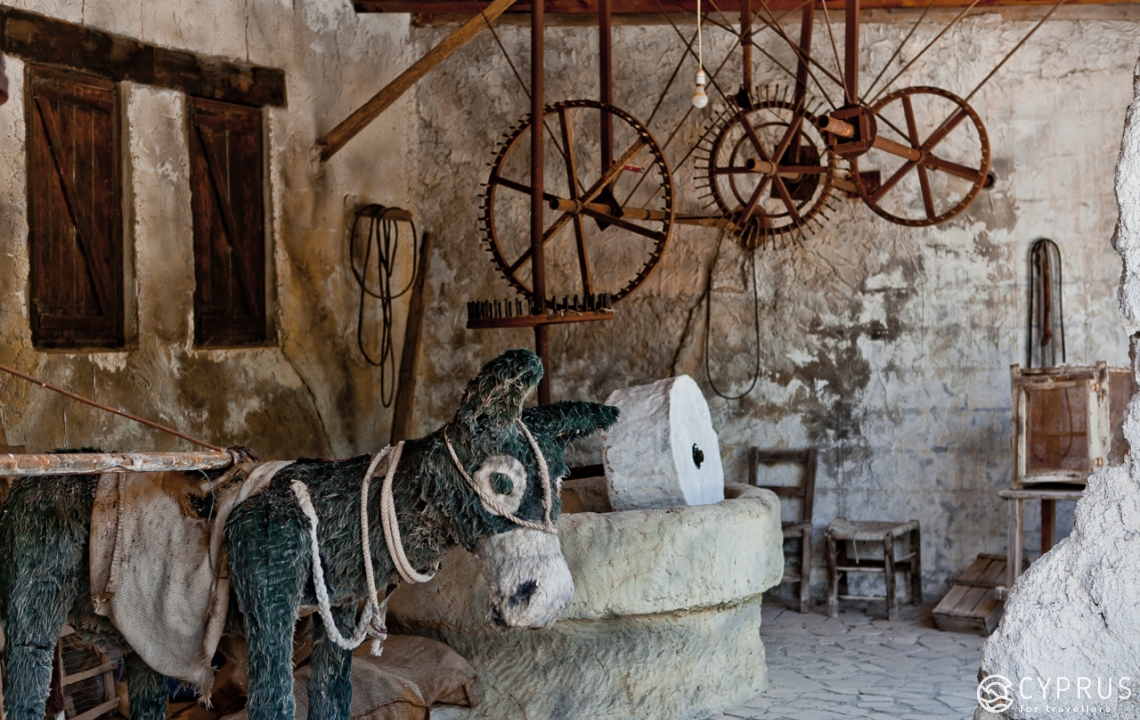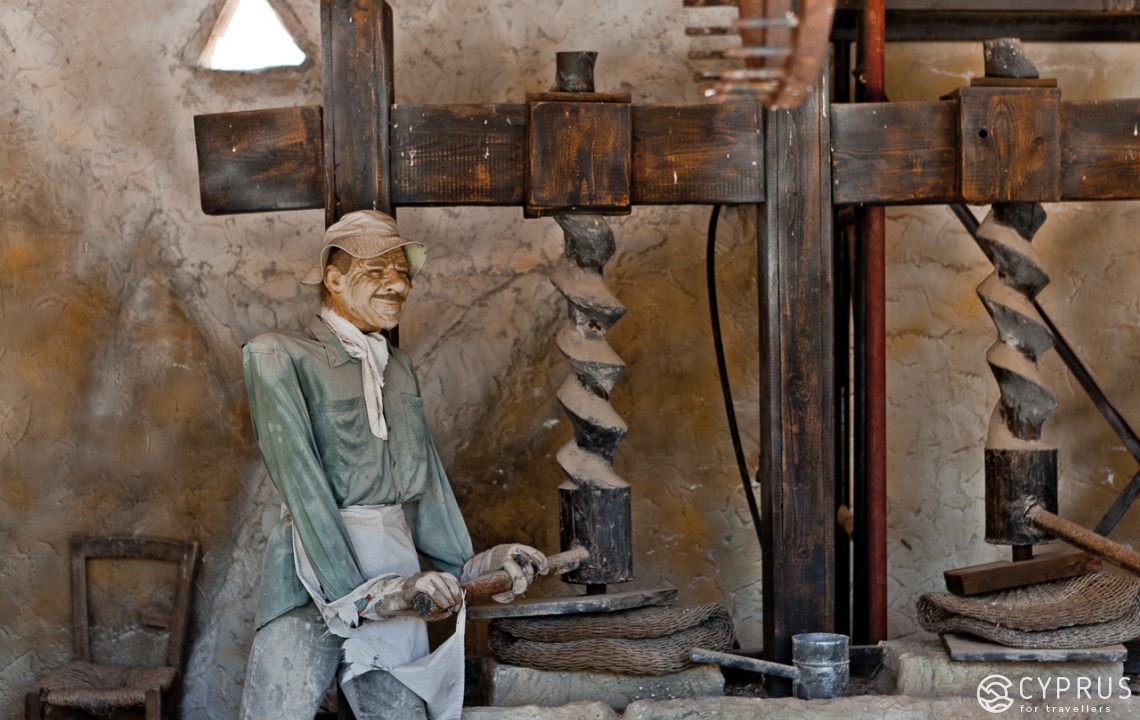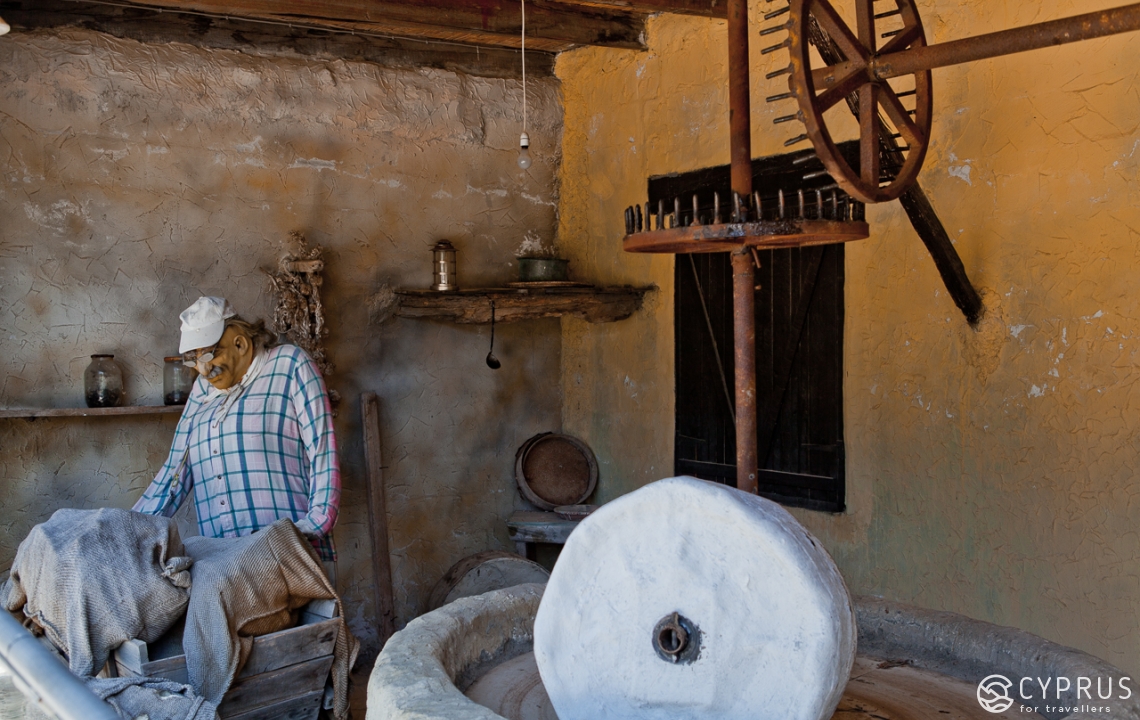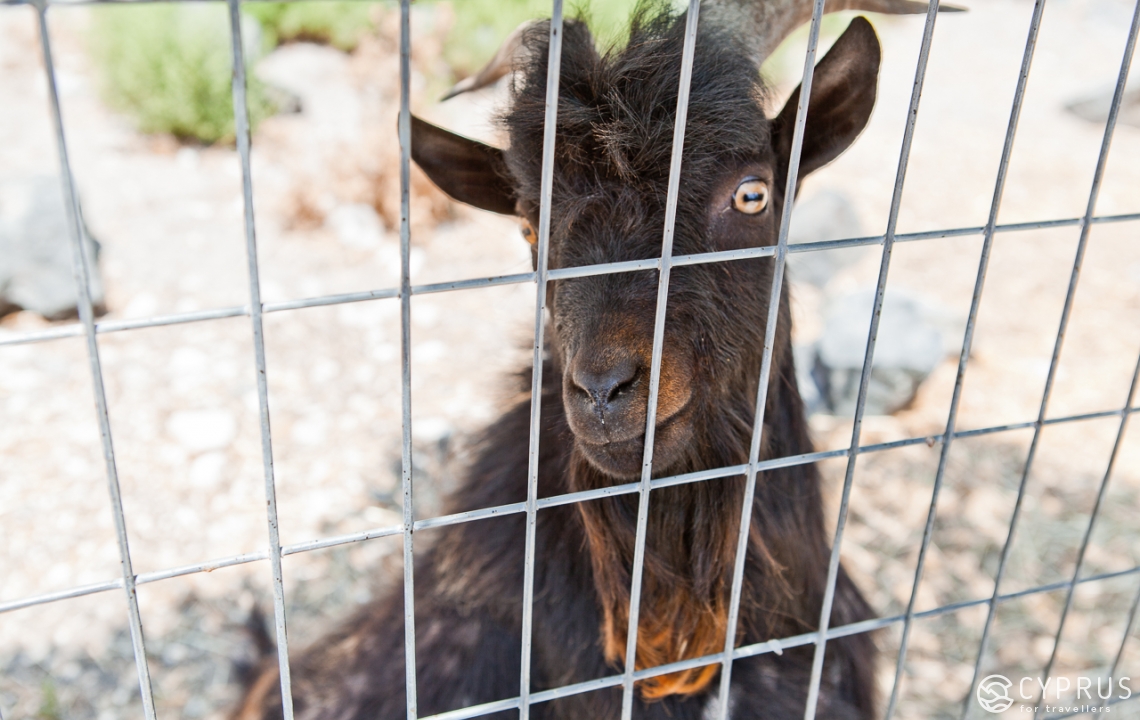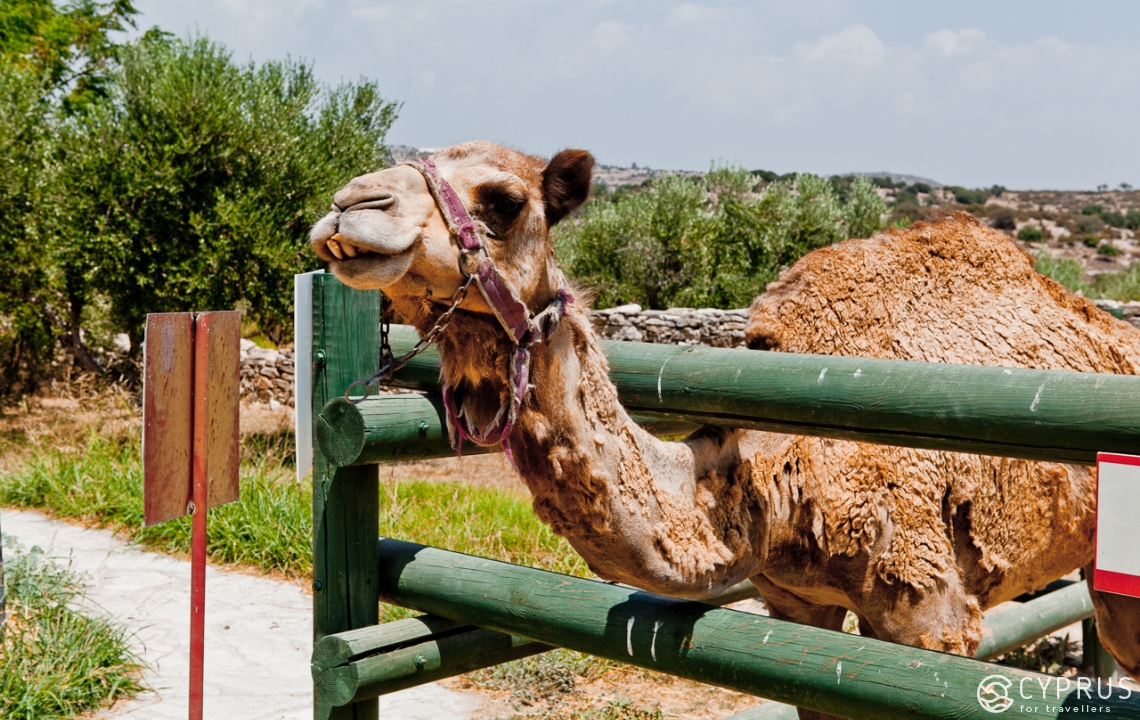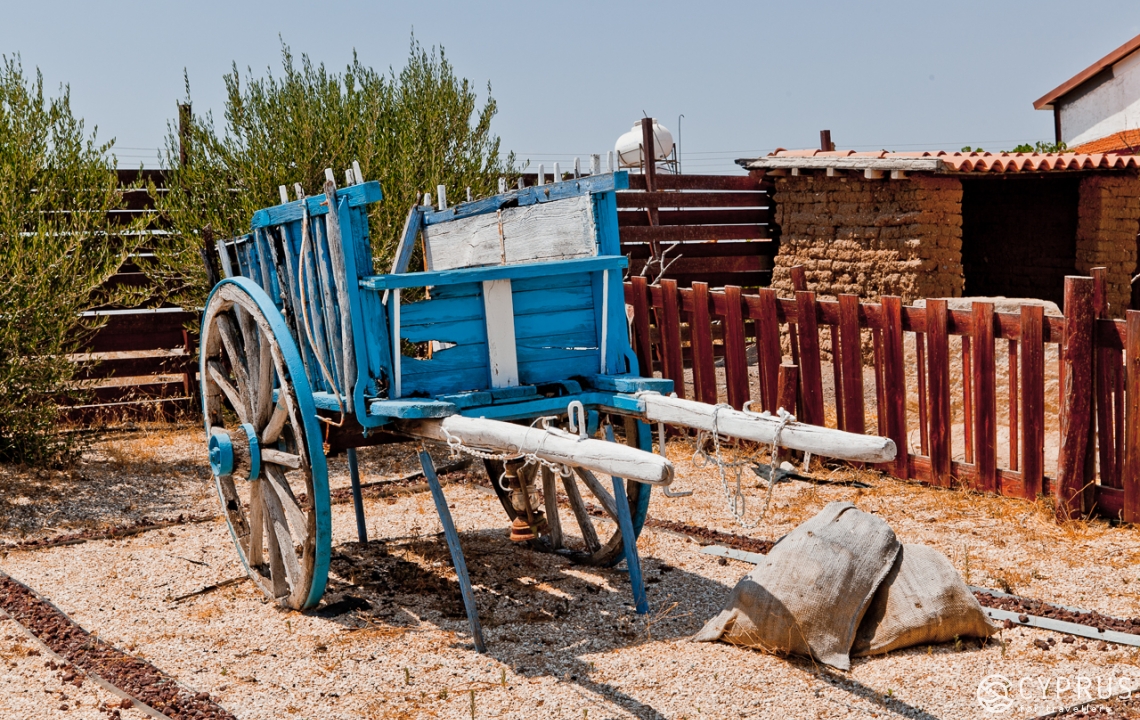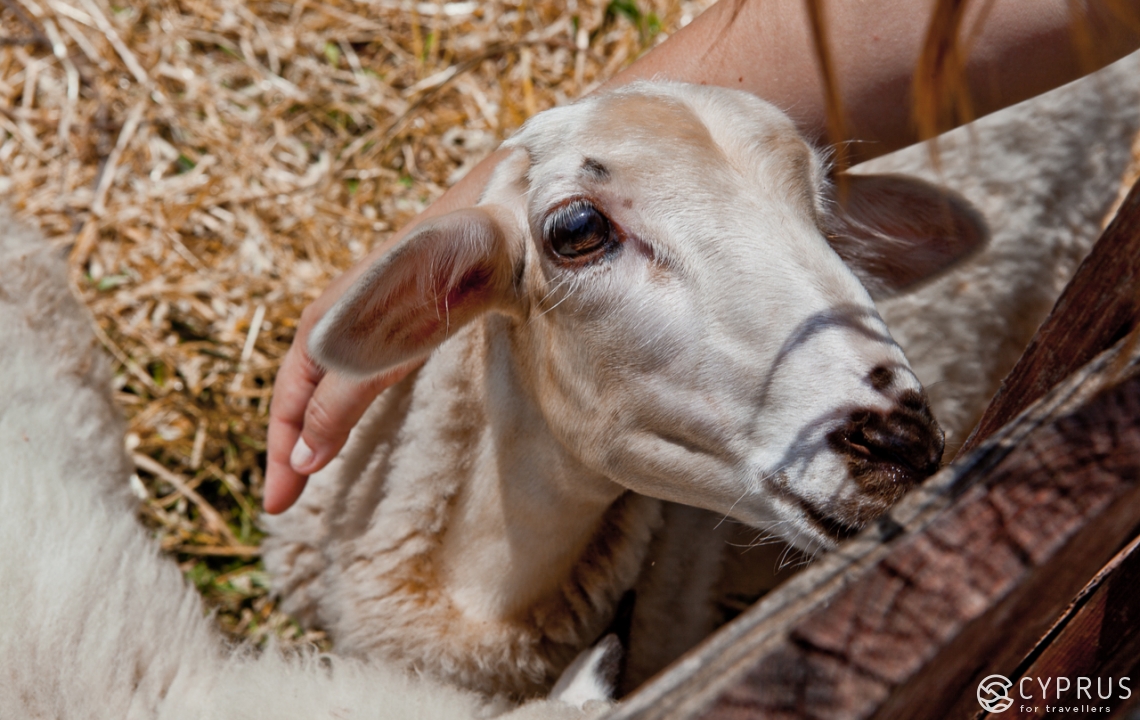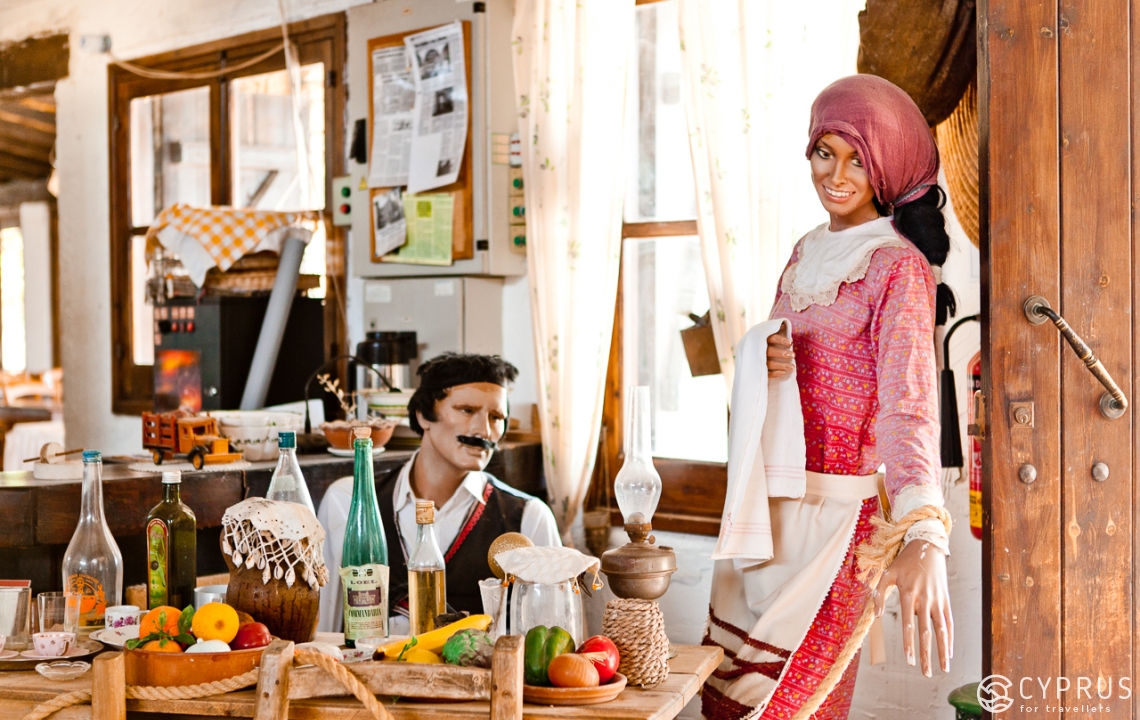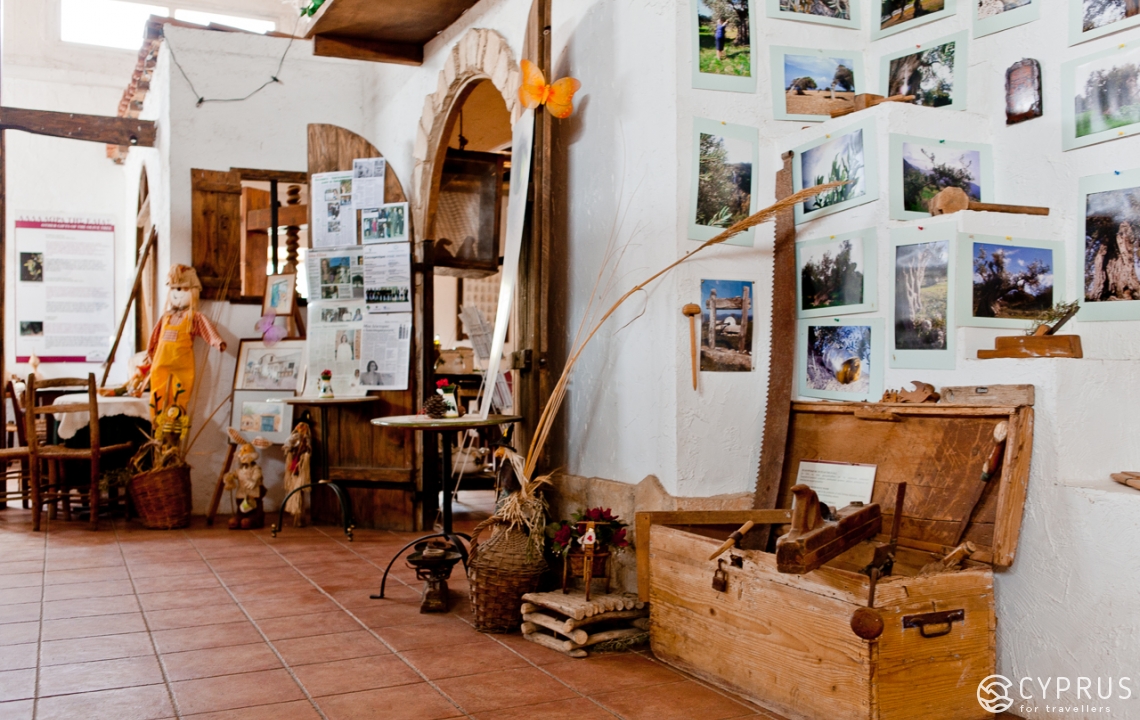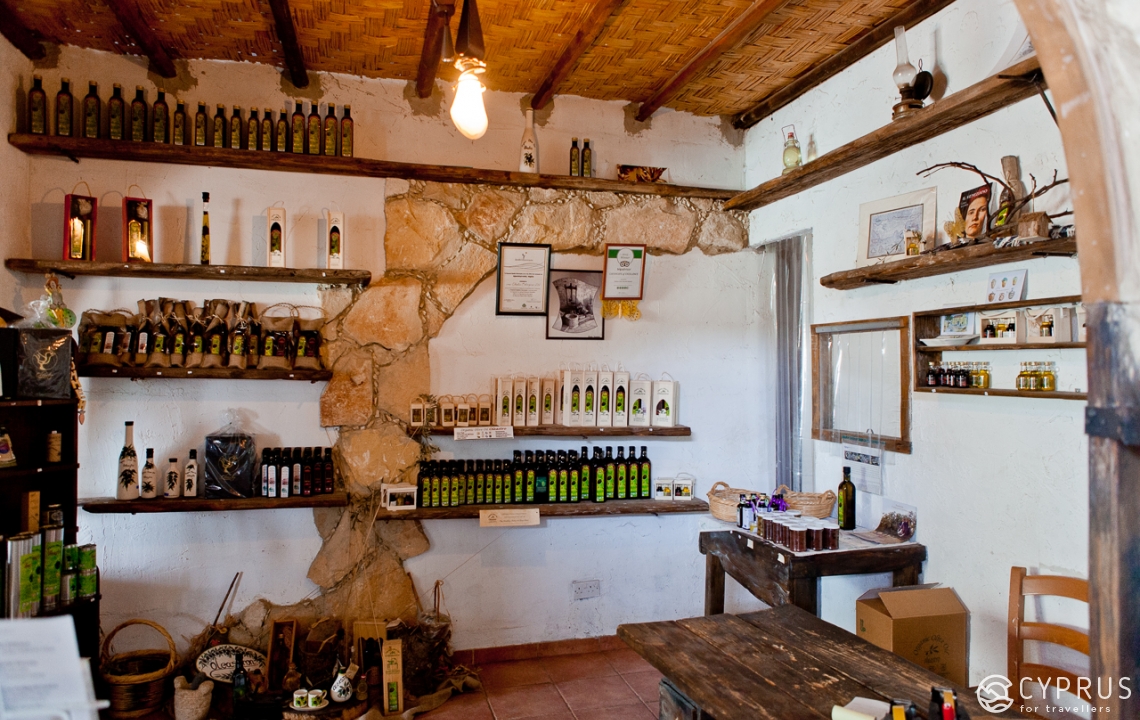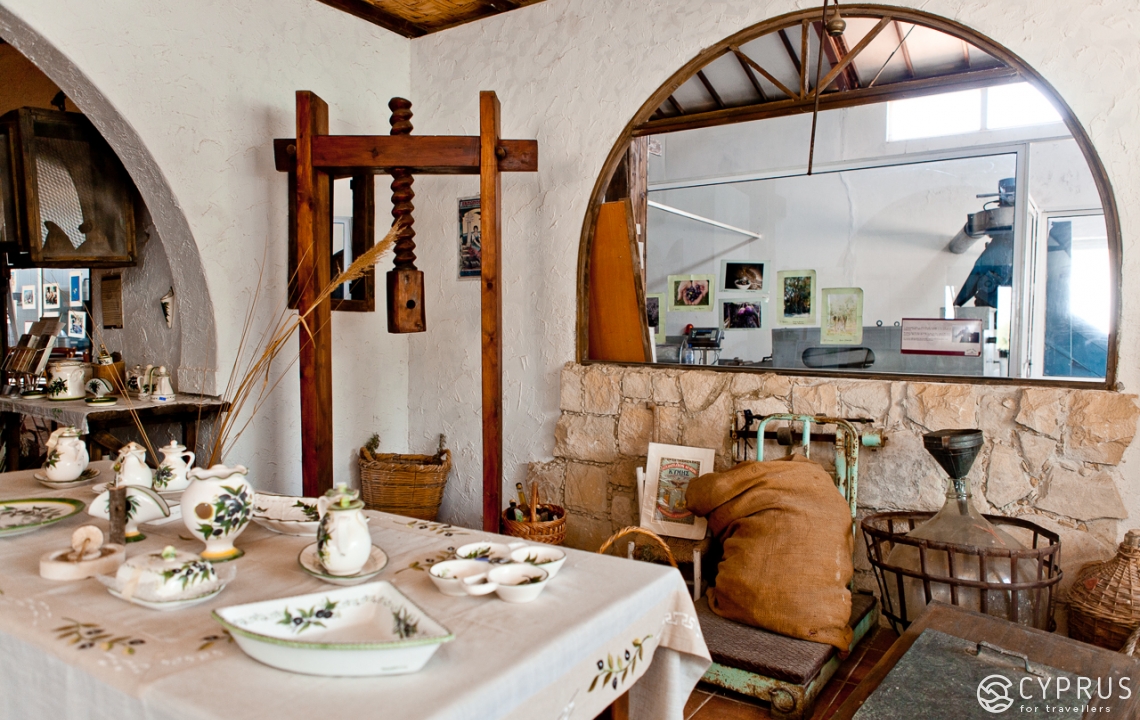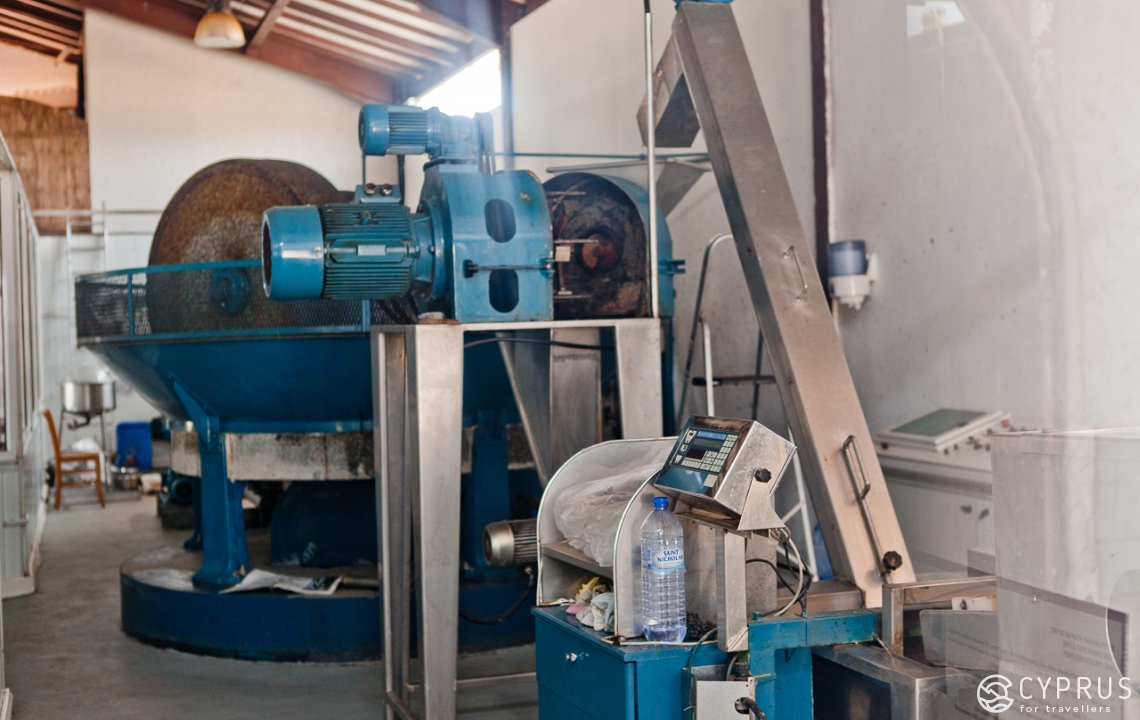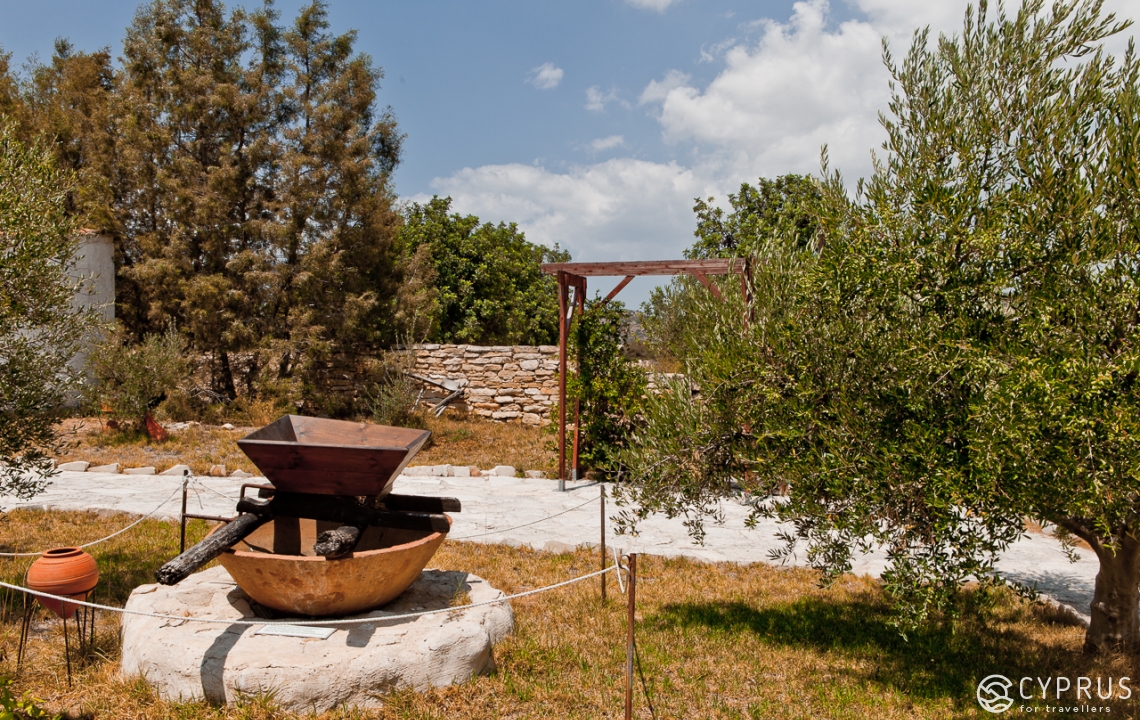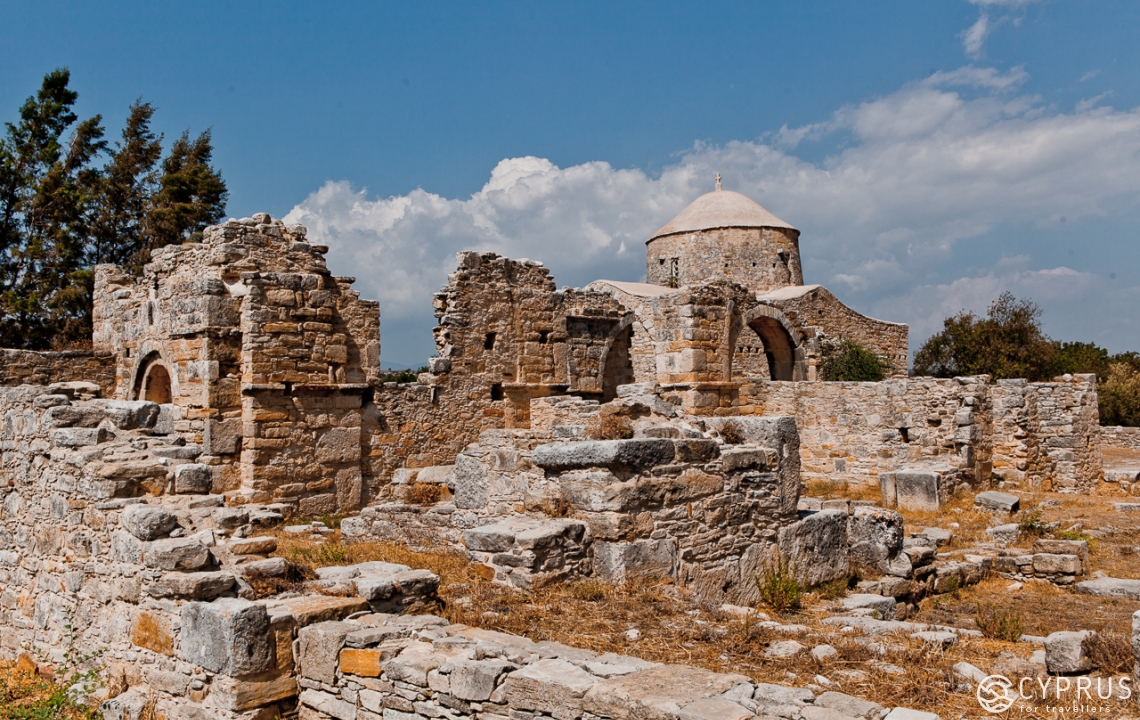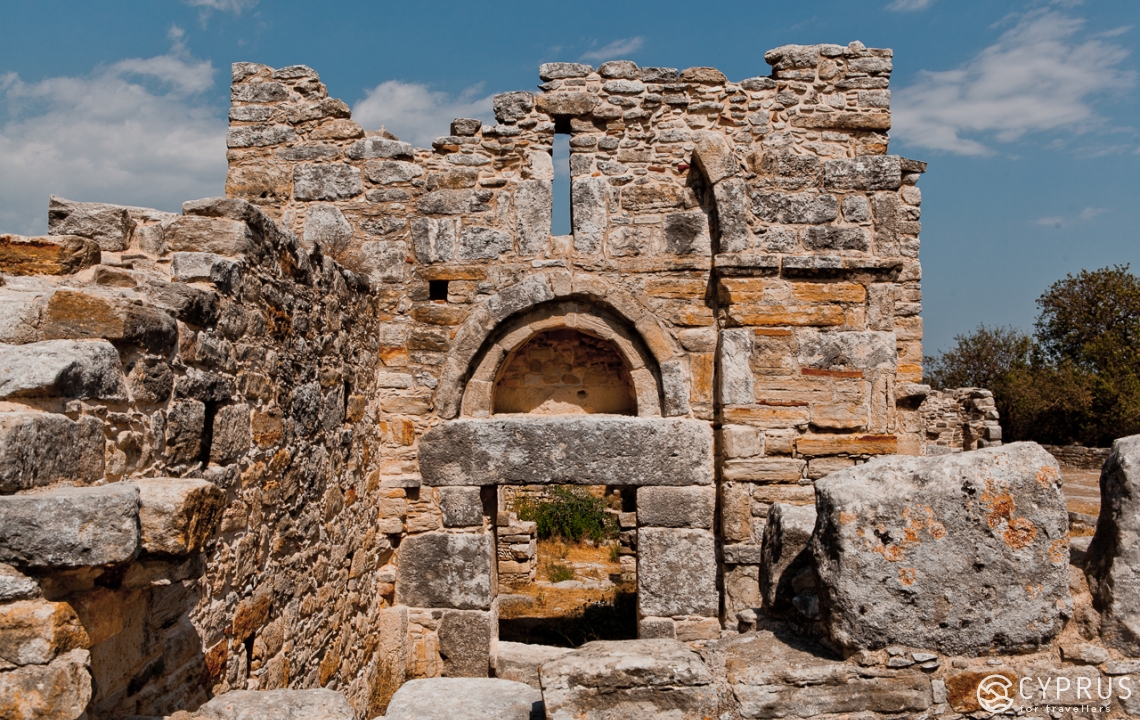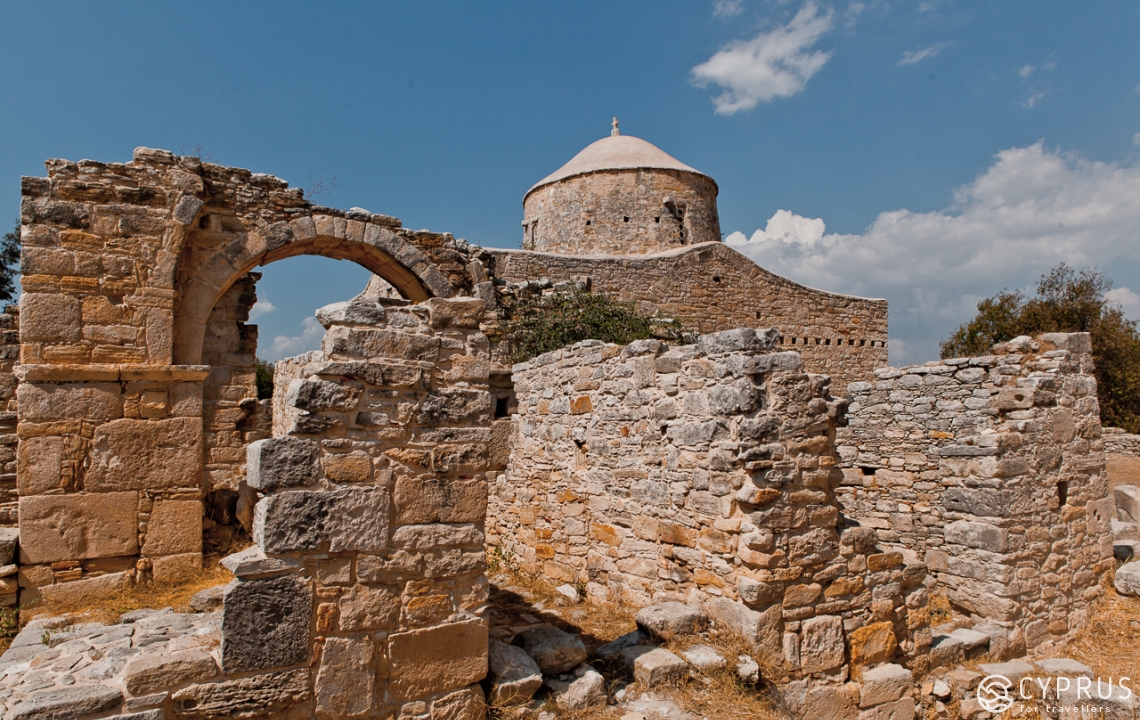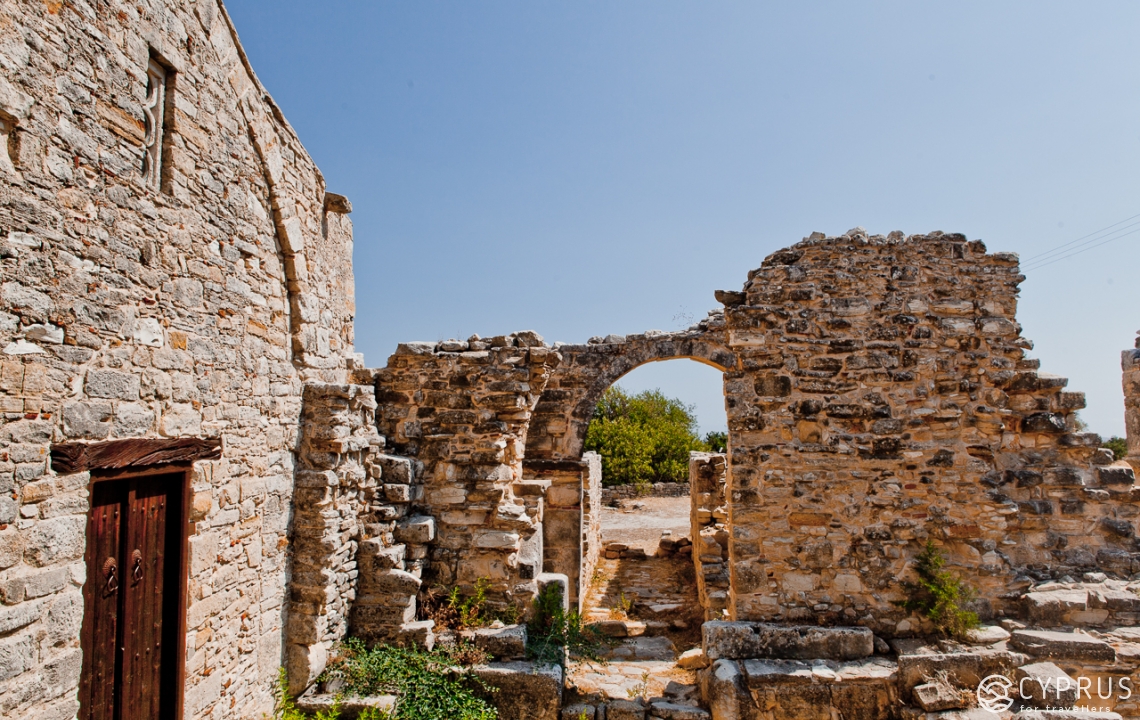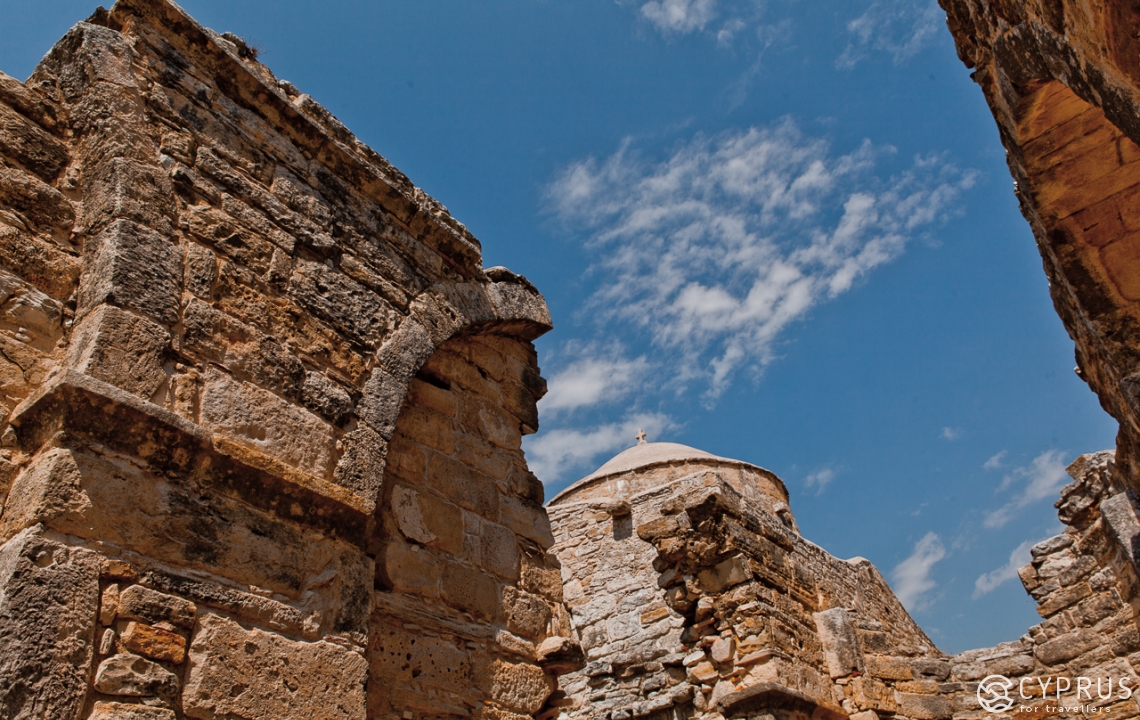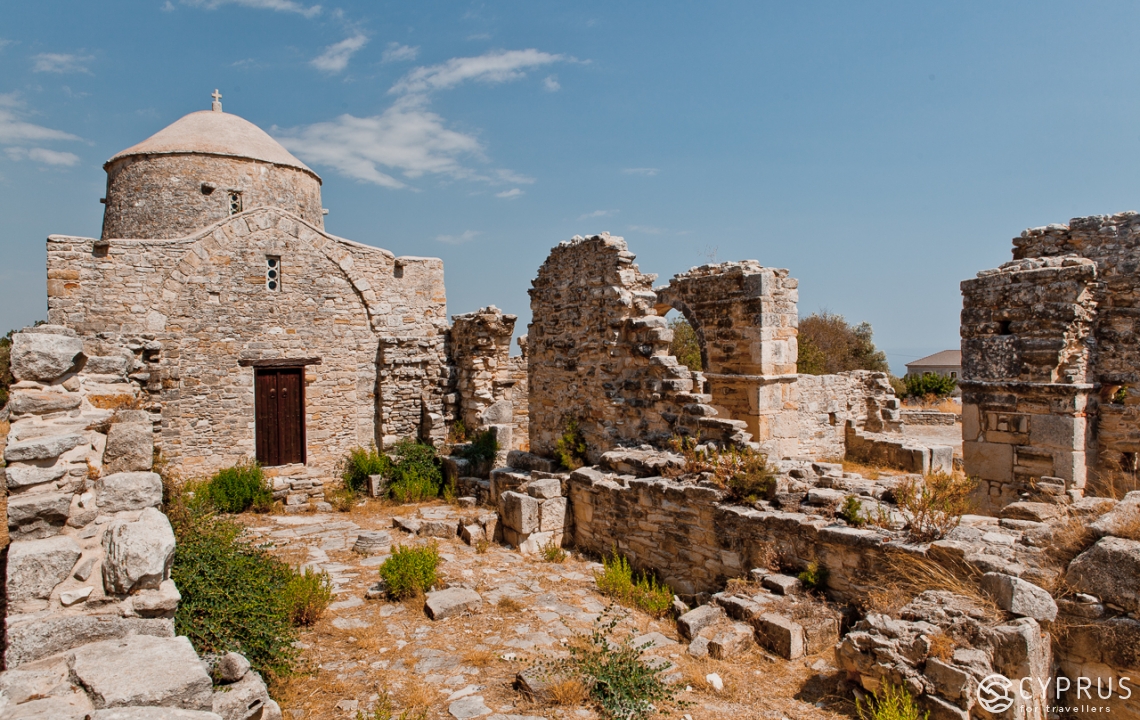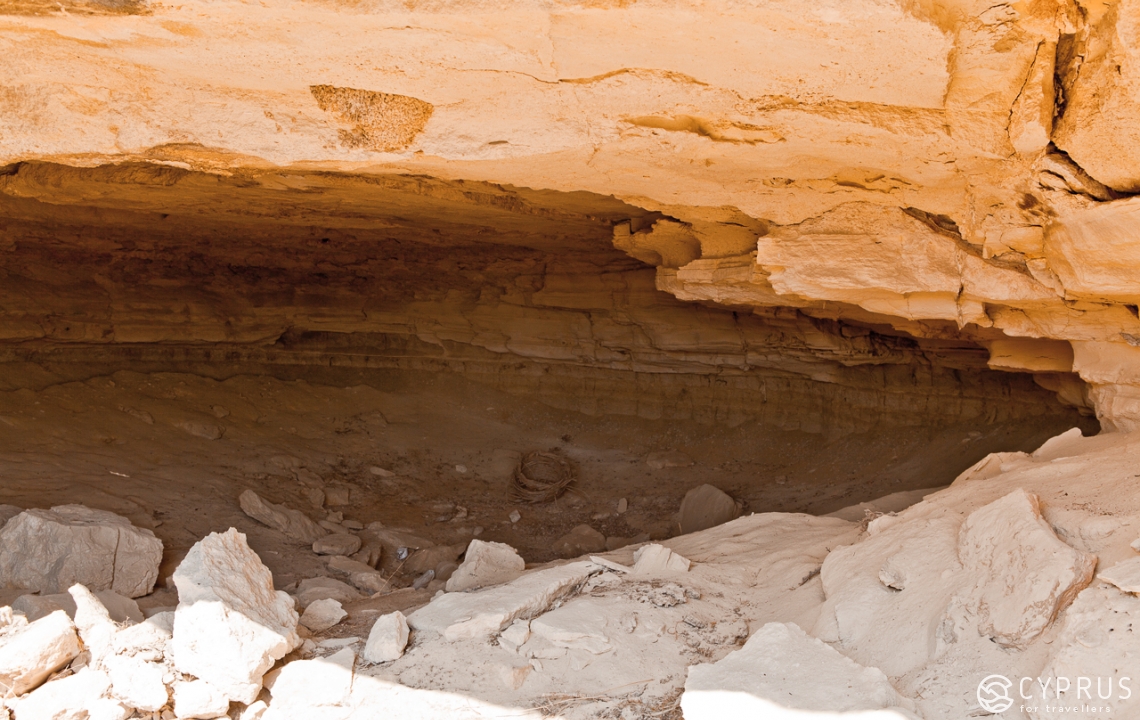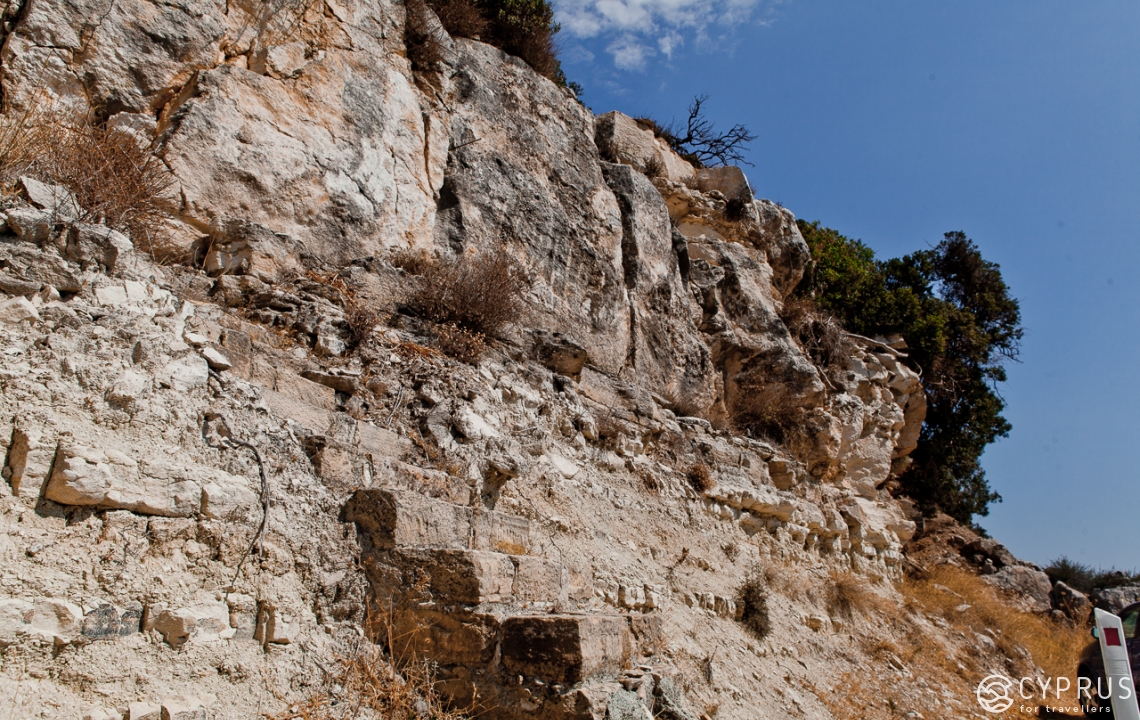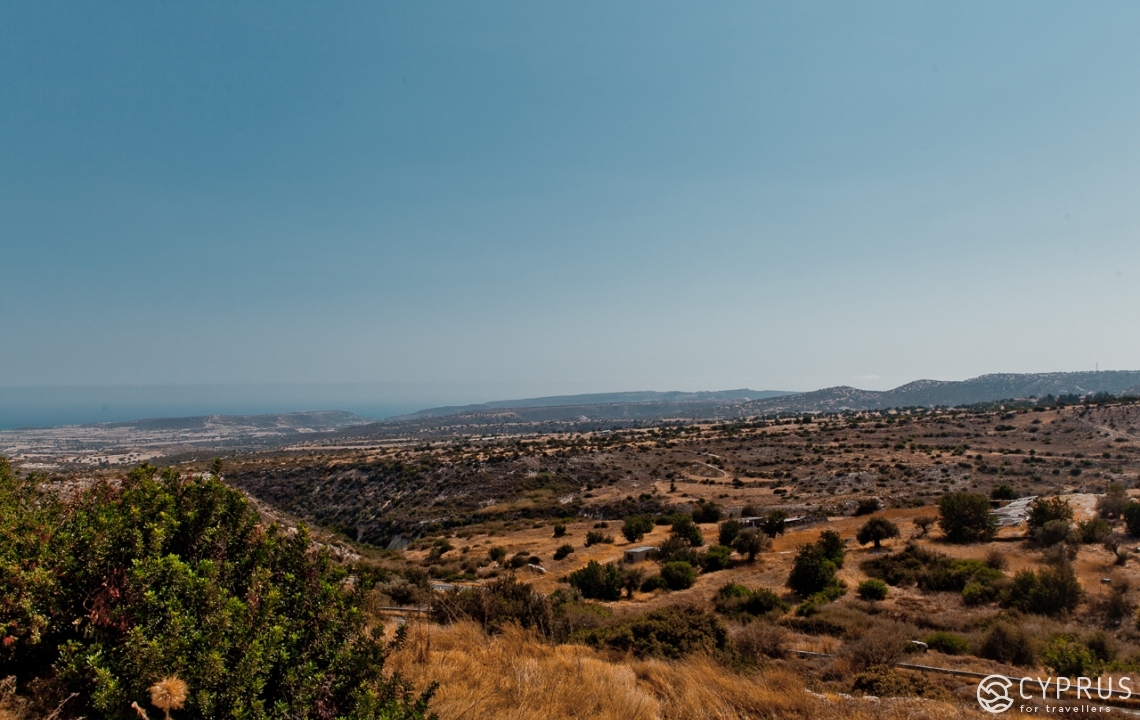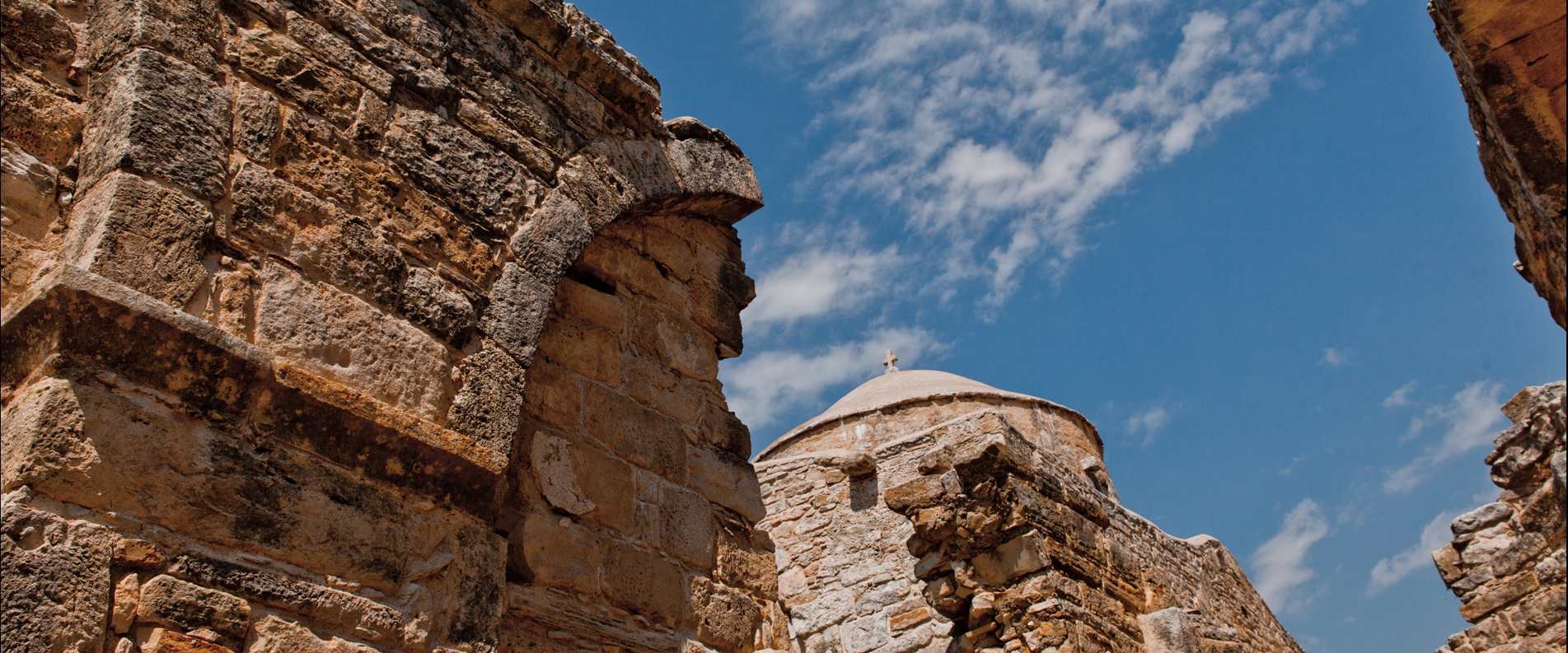The unique position of the village (450m above sea level, a small distance to the coast, with wide, open views to the seafront) enabled it to once act as an outpost, warning of approaching pirates — a constant problem for the Islanders. Nowadays 255 locals reside here, as well as 90 foreigners…. and not a single pirate.
In contrast to many Cypriot villages, especially those in mountainous areas, Anogyra isn’t very densely developed: you can see spacious courtyards concealed behind high stone fences. Small, limestone brick houses belonging to locals, with open veranda solariums on roofs, are surrounded by green gardens.
A narrow bridge across the mountain stream connects the western “quarter” with the centre of the inhabited area. Along one of its sides, you can see an old, room-sized, traditional limestone reservoir, used for gathering water in the 14th century.
With a magnificent sundial hanging above the southern entrance, the church of the Archangel Michael towers over the very heart of the village. Here you can marvel at some magnificent icon works housed in a carved, gold plated iconostasis. While on the church premises, you will no doubt be asked to pay attention to a “pair” of maclura trees (from the mulberry family) — a very rare species on the island, in some respect resembling a sycamore tree. Their yellowy-green fruit (the poisonous “adam’s apple”) is used by local needlewomen to assist in their works.
The most interesting and impressive part of the village is its cobbled square, surrounded by traditional stone housing. A stone-finished spring is situated in its upper part, as well as a medieval statue — one of few discovered on the island.
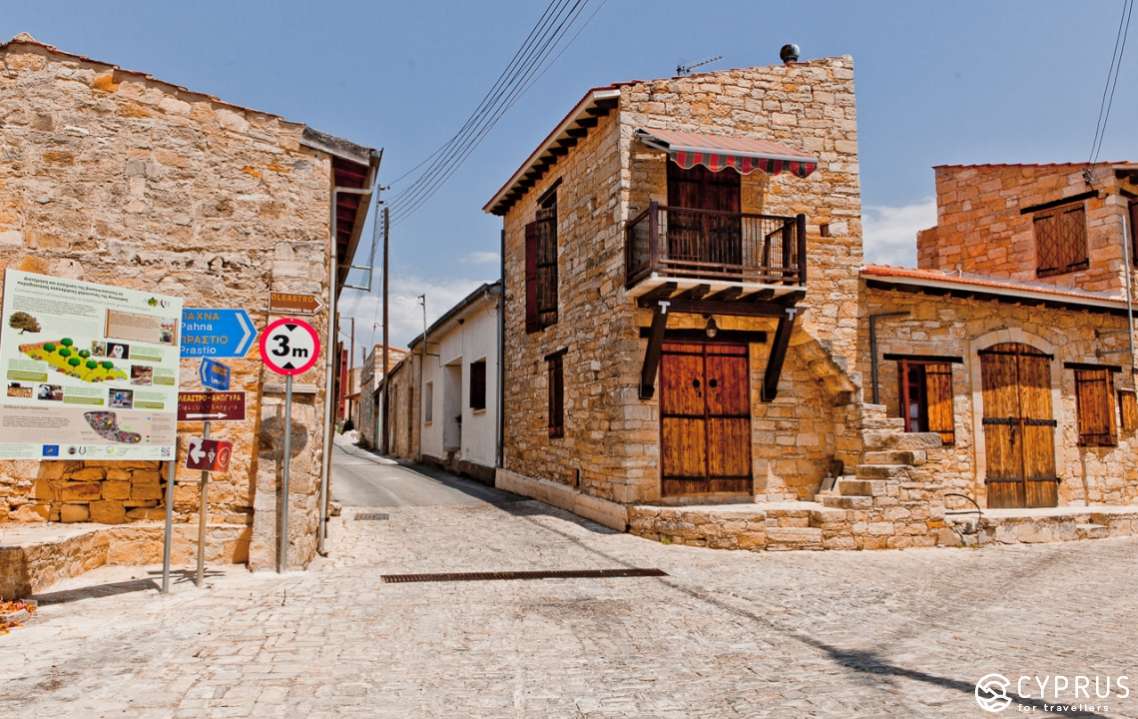
Pasteli Museum
Upon entry you will, no doubt, notice a renovated two-room house, where the museum is situated and production of the very sweet “pasteli” occurs (known to us as a variation of kozniak, favoured by many), which is manufactured from the pods of the carob tree, growing in the vicinity of Anogyra. The technique involves several stages: the pods are ground, soaked and then thoroughly boiled down until an almost solid, black mass is obtained. The mass is then further (this is only done by women) stretched out, as though chained to a special peg in the wall. The process is repeated until the mass acquires a golden colour.
Afterwards, a briquette forms from the thickened syrup, which consequently hardens on cooling. Honey and sesame seeds are always added during the manufacturing process.
Interestingly, pasteli isn’t made here in summer, for any “sweets” quickly melt in the heat.
Nowadays Anogyra is becoming all the more well-known, in particular, due to production from the fruit of the carob tree. In fact, the Carob Factory-Museum is one of several agricultural museums.
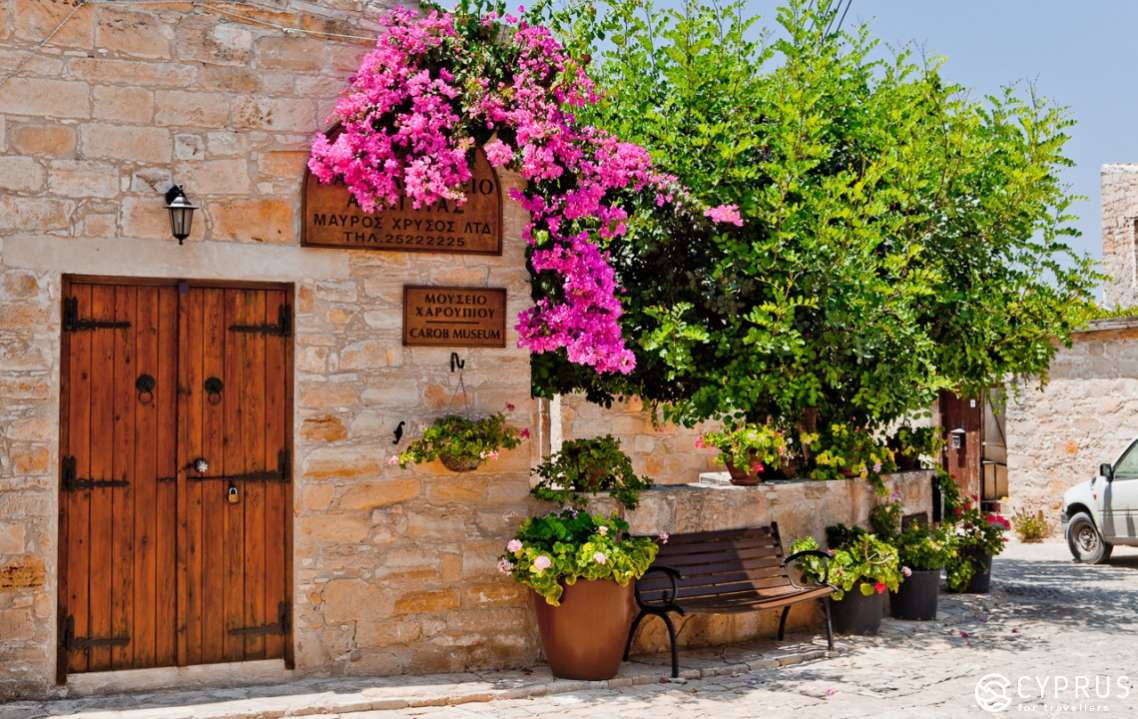
Contacts: Mavros Xrysos Ltd: +357 2522222
Entry Fee: 6 Euro
Please note: the museums’ opening times are not indicated (we couldn’t see them, in any case, when we were there), therefore, if during the day you discover the door to be locked, with no supervisor present — you simply have to accept it and wander on further in search of new ideas.
While heading along the green alleys moving away from the square to the East, you will see the village primary school with Episkopi Bay in the backdrop: various events organised by the Association of Anogyra are held here, orientated around the “Pasteli Festival” — this is a very famous and popular event on the island, which constantly attracts a mass of spectators and participants both across Cyprus and from beyond.
Situated near to the Museum and an old, 16th-century “Italian” style chapel (now closed for reconstruction and thus completely overrun with pigeons) there are two small, green memorial squares, dedicated to two local heroes: Panicos Otonos, a soldier declared missing in action and Lieutenant Nikos Polikarpou, who died as a result of the 1974 Turkish invasion.
We went there in early August — a magical time of long summer holidays awaited by many Cypriots. On these days, even the numerous kiosks and small shops in Anogyra were closed, not to mention the cafes… Yet no doubts could be had with regards to whether the area was inhabited: voices carried out from widely open windows and backyards; music could be heard, but there was nobody on the streets… By midday, a few cats were hiding from the bright sunlight in lush garden greens. So, having come here as an “outsider” you will also, most likely, be left to your own devices.
Oleastro
Not far from Anogyra (5 km) lies the Olive Museum, surrounded by age-old olive groves. It acts as both an amusement park with an improvised zoo and a functioning olive oil factory. Having unexpectedly seen us, a startled monitor lizard began to beat against the glass partitioning. This, however, was only the first representative of the local fauna which we encountered there…
This Disneyland-esque park will greet you with a gushing fountain and a rabbit figure standing on a bridge; from behind, you can see scenic pathways scattering in every direction.
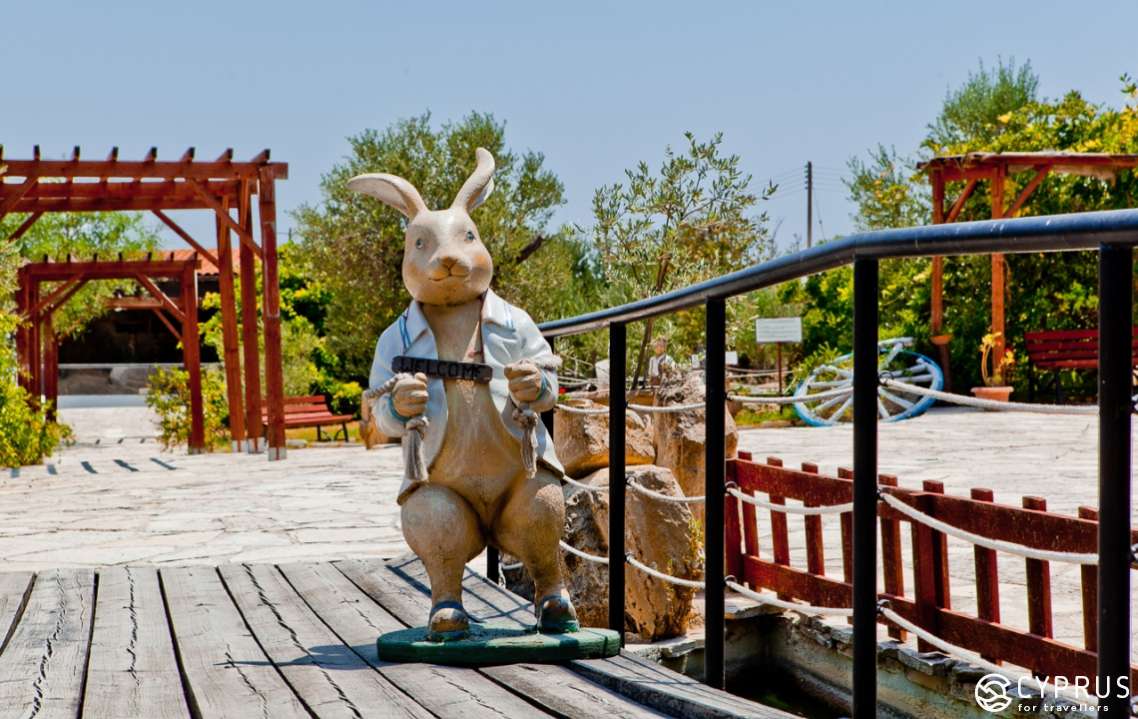
The olive is well known for its slow growth speed and since ancient times has been considered an “eternal” tree, which will still sprout anew even after its trunk has died.
The olive park has been split into separate sectors with pergolas and benches in shaded corners. The sections, which both adults and children will find interesting, consist of an apothecary section (a botanical garden); a thematic exhibition — an interactive display with mechanical dolls portraying village workshops, which can be switched on via a remote with a light hand movement. The park also has a zoo, where you are welcome to feed, stroke and engage with its inhabitants. Oliver — a solitary, yet incredibly sociable goat; Olivia — a rather broody camel female; and a pair of curious sheep, are all delighted to welcome new guests, with the aim of getting to know them more closely.
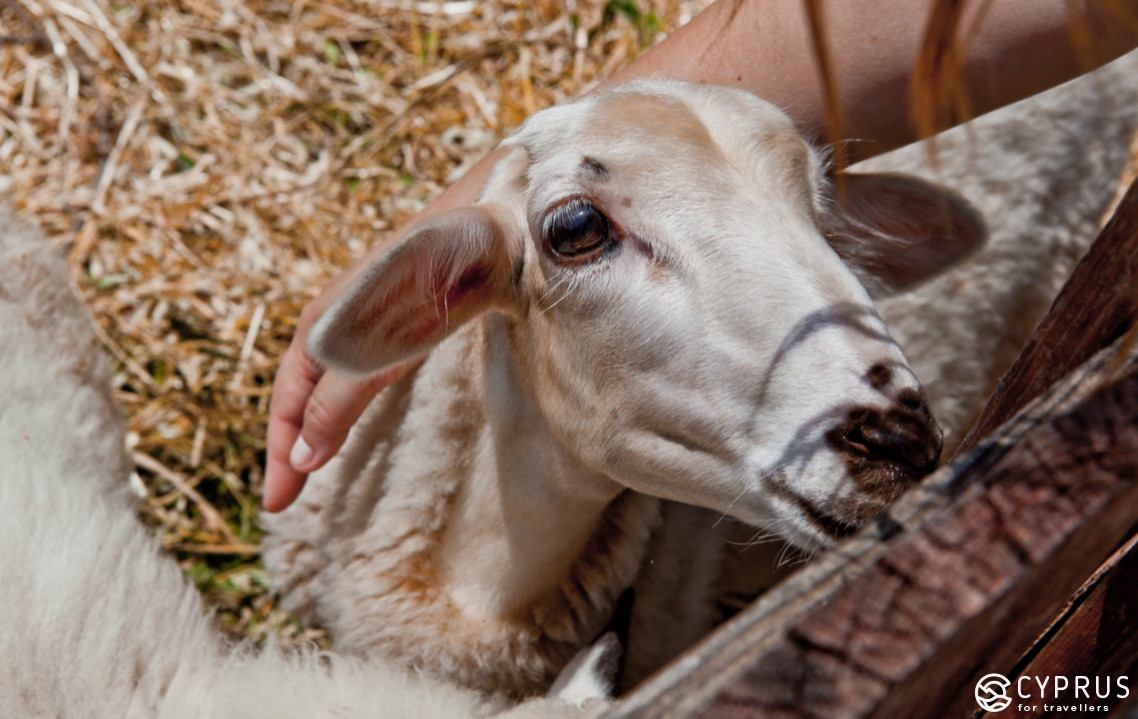
There is also а play area fitted out for the younger generation who have tired themselves out with what they have seen and experienced; a small souvenir section — a fragment of the exhibition, featuring photographs and old artisan instruments. In the same place, behind a plexiglass barrier, you can see the mechanised production of olive oil in action. Anyone who desires can pick olives from their own garden and use the machines to squeeze out the oil. The only condition, according to the manager, is that you must have a “lorry” to transport the load, as you won’t fit several kilograms in a car. True foodies might also be offered the chance to taste a rather expensive jam made with olives and lemon.
You can order drinks to anybody’s taste from the cafe on the veranda, as well as traditional cuisine, including the famous tavas (lamb with rice and vegetables, baked in a pot).
Telephone: +357 99525093
Entry: 3 Euro for children and tourists; 2 for group members.
Nikolaides Winery
A long-standing winery lies on the village territory, belonging to the Nikolaides family, which has produced 130 thousand bottles of the most popular wines among Cypriots and foreign guests — chardonnay and rose. Wine manufacture began here in 1986, while the present day business is run by Nikolas Nikolaides, a third generation winemaker, who now owns four hectares of vineyards.
Telephone: +357 25221709
Sanctuary of Apollo
The ruins of this sanctuary were discovered 2.5 km from Anogyra during an excavation conducted by the Russian Academy of Sciences.
On the 7th January 2001, an article was published in CYPRUS MAIL, which noted in particular: “The remains of a large building complex from the Roman period, with an area close to 200 square metres, have been discovered during excavations of the Vlou settlement, located to the north-east of Anogyra village. According to the report by the Department of Antiquities, the completed excavation was carried out by the Institute of the History of Material Culture at the Russian Academy of Sciences, led by Doctor V. A. Goroncharovsky.
According to specialists, this area was probably part of a rural sanctuary belonging to the god Apollo, dating back to 4 A.D. During previous field investigations, several rooms were discovered inside the construct, in addition to a 65-square-metre courtyard. The excavation revealed a large number of broken ceramic items and one can assume that roof awnings once covered the perimeter. The two levels of this courtyard are connected by a small staircase. The remains of a regulated drainage system are visible to the east of the stairs.
A furnace was discovered to the right of the entrance, along with a small ash pit. Several of the building’s walls were found to have been damaged as a result of a strong earthquake…”.
Strange stones — measuring 1.3 m in height, with holes in the middle — can also be encountered on the village territory, with which many legends and superstitions have been linked. For instance, it is believed that children who were passed through the largest stone would be cured of any ailment. Grown men sought to pass through some holes, for according to a different legend, whoever managed to do this would gain the loyalty of their wife forever. Though the locals revere these monuments of ancient culture, a number of scientists consider these “megaliths” to be merely ancient presses for manufacturing olive oil.
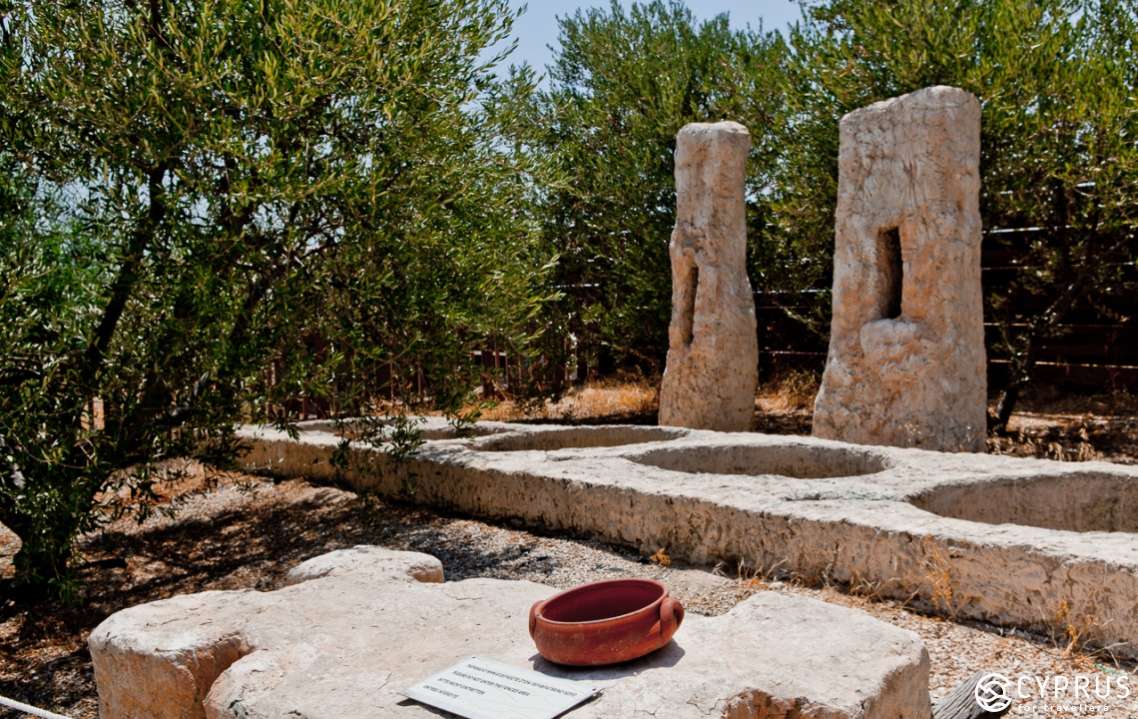
The Monastery of the Holy Cross
Next to the village (as you approach it) lie the ruins of the Monastery of the Holy Cross. It was built in the 14th century on the remains of an ancient Christian church, which had, in turn, been constructed over a late-Roman and early-Byzantine settlement, referred to in the age of Antiquity as “the Land of Anogyron”. Inside the church, you can find stunning frescoes in a partially preserved condition, which were presumably painted by artists who had fled to Cyprus from Constantinople, after the 1453 siege by the Turks.
Legend has it that the monastery was once enormously rich. Logically, the monks, wishing to hide their riches, dug a secret passage (or several even) under the building, where they hid their treasures… several managed to be hidden so successfully that they still haven’t been found to this day, but the minds and souls of many are still excited by this legend.
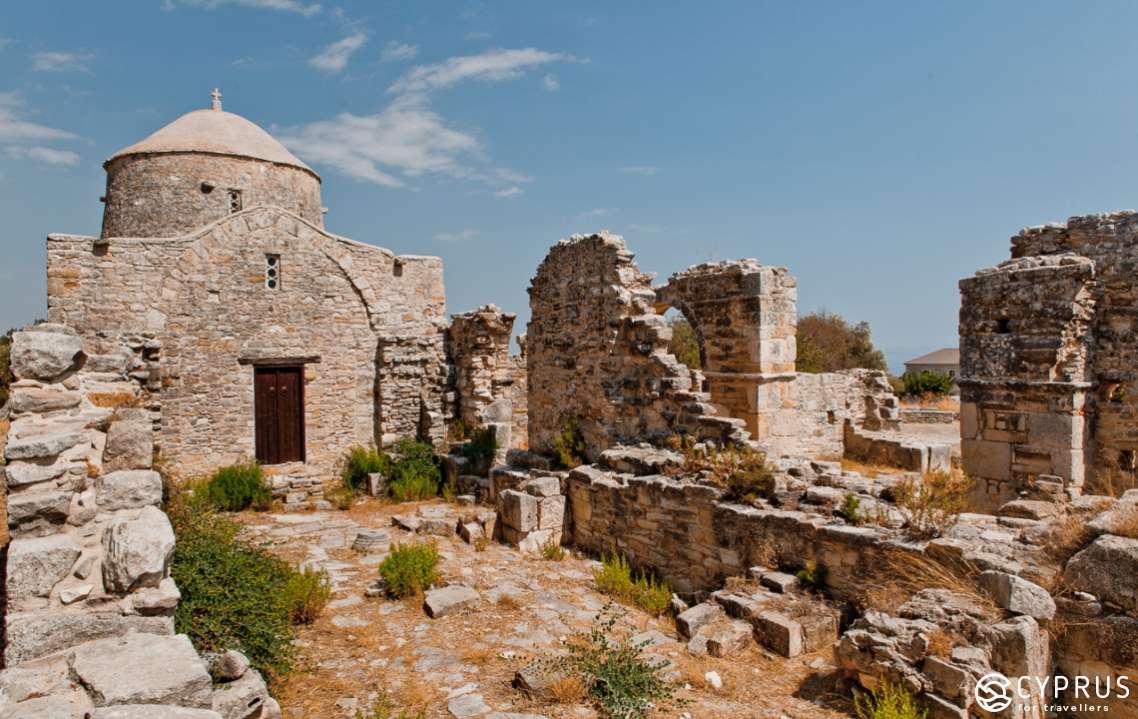
Anogyra is a scenic, remote setting, located away from the island’s well-trodden tourist routes, which has preserved its tranquil style, history and traditions. Both shrouded in authentic history and fables of the past, it is always delighted to have new visitors.

Useful Advice
Where to stop and grab a bite: there are several hotels in Anogyra, such as Tou Leptou (along Vasa Kilianiou street), offering 3 comfortable rooms, all fitted with the essentials. Tel: +357 99080498. Amongst others, it is worth noting: Nicolasand Marias Landhaus (Papaelisseou 4) and Anogyra Dream Villa (Echo Fraktis 6).
Keep a map of the village on you or some sort of navigator, otherwise on summer days, when there’s hardly anybody on the streets, you’ll struggle to find any information. It’s also worth having a think beforehand about where to stop for lunch. In fact, you can have a rest and grab a bite to eat at the Anogyra tavern (along Courtellou street, +357 99795468) or in the restaurant Nicholas (where there is also a local swimming pool, on Echo Frakti street, +357 25221584), Oleastro also has a pretty good cafe.
Please take into consideration: The village’s “Pasteli Festival” is held annually, in the middle of September.
Getting there: From Limassol, head along the A6 towards Paphos, after 26 km, at the turnoff for Avdimou — Anogyra, exit onto junction F606. Continue onwards following the signs and turn onto the F607, then take the F608 after the fork.
Mysteriously, on a winding mountain road en route to the village, you will encounter an ancient stone staircase, carved into the cliffside, which nowadays leads to nowhere. It is assumed to have once been a passageway. A small cave remains nearby, while a little lower — a freshwater spring, with a staggering view overlooking the mountains and sea.
By bus: the number 70 goes from Limassol to Anogyra, see here for more details www.cyprusbybus.com.
Until Next Time!


